CURARSI CON IL PEPERONCINO
Treat yourself with chili Pepper
唐辛子で自分にご褒美をあげましょう
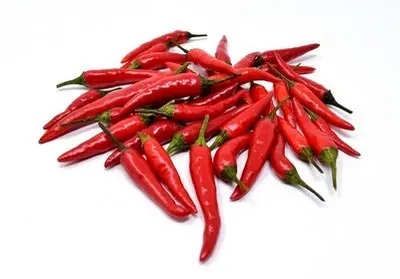
Il suo nome scientifico è “Capsicum annuum”, ma è senz’altro più conosciuto come peperoncino rosso piccante e, nelle varie regioni d’Italia, come: diavoletto, mericanill, pevrum, peparuolo, pipidigno, peparussi, pevium e pipariellu. È una spezia di origini antiche, che trova il suo habitat ideale nelle zone più calde del mondo ma che cresce bene anche in Italia, soprattutto in Calabria e in Sicilia, dove è sicuramente più apprezzato che al nord, e non soltanto in culinaria. Pare infatti che il peperoncino rosso sia, oltre che un’ottima spezia aromatizzante, un utile rimedio terapeutico. Secondo i cultori più convinti tale piccante cornetto sarebbe efficace per guarire numerosissimi disturbi, secondo i più scettici, invece, la somministrazione prolungata genere- rebbe infiammazioni e irritazioni gastrointestinali. La scienza però conferma un’abbondante presenza di vitamine (soprattutto la C), e la capacità di migliorare la circolazione grazie alla vitamina P, o di abbassare il colesterolo nel sangue per merito della lecitina.
Non è un caso dunque, se il peperoncino è sempre stato annoverato tra le spezie, cioè tra i prodotti vegetali con valore medicinale (il termine “speziale” equivale a farmacista). La tradizione popolare ne consiglia l’uso addirittura contro la caduta dei capelli, contro i reumatismi, le emorroidi, le ferite. E secondo i soci del “Club del Sanpeperoncino”, fondato da Ettore Liuni e con diverse sedi in Italia, il piccante cornetto guarisce persino il tabagismo e allunga la vita. Insomma ce n’è per tutti i gusti ma, proprio per questo, sarà bene iniziare subito a fare un po’ d’ordine nella quantità di notizie che circolano a proposito di questa spezia.
Its scientific name is “Capsicum annuum”, but it is certainly better known as a spicy red chili pepper and, in the various regions of Italy, as: diavoletto, mericanill, pevrum, peparuolo, pipidigno, peparussi, pevium and pipariellu. It is a spice of ancient origins, which finds its ideal habitat in the warmest areas of the world but which also grows well in Italy, especially in Calabria and Sicily, where it is certainly more appreciated than in the north, and not only in cuisine. In fact, it seems that red chili pepper is, as well as an excellent flavoring spice, a useful therapeutic remedy. According to the most convinced enthusiasts, this spicy croissant would be effective in healing numerous ailments, while according to the most sceptical, prolonged administration would generate gastrointestinal inflammation and irritation. However, science confirms an abundant presence of vitamins (especially C), and the ability to improve circulation thanks to vitamin P, or to lower blood cholesterol thanks to lecithin
It is therefore no coincidence that chilli pepper has always been included among the spices, that is, among the plant products with medicinal value (the term “speziale” is equivalent to pharmacist). Popular tradition even recommends its use against hair loss, rheumatism, hemorrhoids and wounds. And according to the members of the “Club del Sanpeperoncino”, founded by Ettore Liuni and with various branches in Italy, the spicy croissant even cures smoking and prolongs life. In short, there is something for all tastes but, for this very reason, it will be a good idea to immediately start putting some order into the amount of news circulating about this spice.
学名は「Capsicum annuum」ですが、イタリアのさまざまな地域では、ディアヴォレット、メリカニル、ペヴルム、ペパルオーロ、ピピディーニョ、ペパルッシ、ペビウム、ピパリエルとして、スパイシーな赤唐辛子としてよく知られています。古代起源のスパイスであり、世界で最も温暖な地域に理想的な生息地を見つけていますが、イタリア、特にカラブリア州とシチリア島でもよく栽培されており、料理だけでなく北部よりも確実に高く評価されています。 。実際、赤唐辛子は優れた風味付けスパイスであるだけでなく、有用な治療薬でもあるようです。最も確信している愛好家によれば、このスパイシーなクロワッサンは多くの病気の治癒に効果的であるが、最も懐疑的な人々によれば、長期にわたる摂取は胃腸の炎症や炎症を引き起こす可能性があるという。しかし、ビタミン(特にC)が豊富に含まれていること、ビタミンPのおかげで循環を改善する能力、またはレシチンのおかげで血中コレステロールを下げる能力が科学によって確認されています。
したがって、唐辛子が常にスパイスの中に、つまり薬効のある植物製品の中に含まれていることは偶然ではありません(「スペツィアーレ」という用語は薬剤師に相当します)。人気の伝統では、脱毛、リウマチ、痔、傷に対する使用さえ推奨しています。そして、エットーレ・リウニが設立し、イタリアにさまざまな支店を持つ「クラブ・デル・サンペペロンチーノ」のメンバーによると、スパイシーなクロワッサンは喫煙を治し、寿命を延ばすことさえあるという。つまり、どんな好みにも合うものがあるということですが、だからこそ、このスパイスについて流通するニュースの量に今すぐ何らかの秩序を与え始めることをお勧めします。
LE PIANTE DELLA SALUTE
Health plants – 健康植物
Galeno, celebre medico dell’antichità, soleva ripetere che “il miglior medico è la natura perché guarisce i tre quarti di tutte le malattie”.
Oggigiorno la scienza svolge un ruolo fondamentale nella prevenzione e nella cura delle più diverse patologie, ma ciò non significa che non siano tuttora validi i vecchi rimedi a base di erbe, gli stessi che i nostri bisnonni ci hanno tramandato. La fitoterapia si occupa appunto di medicina “verde”, cioè di curare in modo semplice e naturale utilizzando sostanze vegetali. Ciò, non significa, però, che chiunque se ne possa occupare con troppa faciloneria. È vero che, benché siano disponibili esperti qualificati in qualunque città, spesso non occorre essere erboristi per prepararsi in casa qualche semplice tisana, ma è molto importante agire sempre con cautela e attenersi alle indicazioni esposte nelle ricette. E comunque, se il malanno è serio, soltanto dopo aver consultato un medico.
La fitoterapia infatti, non agisce in contrasto con la scienza e la medicina moderna, come taluni credono, ma in sintonia con essa. Benché al giorno d’oggi l’industria farmaceutica tenda a prediligere i prodotti chimici e le sostanze sintetiche, non va dimenticato che molti farmaci derivano da sostanze vegetali: i cortisonici dalla radice di patata, per esempio, alcuni anestetici dall’olio di eugenolo, ossia dal chiodo di garofano, e gli antibiotici, come la famosa penicillina, da muffe di origine vegetale. Va detto che un preparato fitoterapico, solitamente, ha un tempo d’azione più lento di un prodotto chimico ma, spesso, presenta minori effetti collaterali. Ciò non deve però illudere sull’innocuità di qualunque sostanza vegetale. Premessoche ogni individuo puo rispondere con impreviste reazioni allergiche anche alla piu inoffensiva delle erbe, non dimentichiamo che anche tra le piante esistono specie nocive o che comunque devono essere trattate con cautela. Un esempio banale?
Galen, a famous doctor of antiquity, used to repeat that “the best doctor is nature because it heals three-quarters of all diseases”.
Nowadays science plays a fundamental role in the prevention and treatment of the most diverse pathologies, but this does not mean that the old herbal remedies are not still valid, the same ones that our great-grandparents handed down to us. Phytotherapy deals with “green” medicine, that is, treating in a simple and natural way using plant substances. This does not mean, however, that anyone can deal with it too easily. It is true that, although qualified experts are available in any city, it is often not necessary to be a herbalist to prepare some simple herbal tea at home, but it is very important to always act with caution and follow the instructions given in the recipes. And in any case, if the illness is serious, only after consulting a doctor.
In fact, phytotherapy does not act in contrast with science and modern medicine, as some believe, but in harmony with it. Although nowadays the pharmaceutical industry tends to favor chemicals and synthetic substances, it should not be forgotten that many drugs are derived from plant substances: cortisone from potato root, for example, some anesthetics from eugenol oil, that is, from the clove, and antibiotics, such as the famous penicillin, from molds of plant origin. It must be said that a phytotherapeutic preparation usually has a slower action time than a chemical product but often has fewer side effects. However, this should not mislead us about the harmlessness of any vegetal substance. Given that every individual can respond with unexpected allergic reactions to even the most harmless of herbs, let’s not forget that even among plants there are species that are harmful or which in any case must be treated with caution. A trivial example?
古代の有名な医師ガレノスは、「最良の医者は自然である。なぜなら自然はすべての病気の 4 分の 3 を治すからである」と繰り返し述べていました。
今日、科学は最も多様な病状の予防と治療において基本的な役割を果たしていますが、これは、私たちの曽祖父母が私たちに伝えてきたのと同じ古い薬草療法がまだ有効ではないという意味ではありません。植物療法は「グリーン」医療、つまり植物物質を使用したシンプルで自然な方法で治療することを扱います。ただし、これは誰でも簡単に対処できるという意味ではありません。確かに、どの都市にも資格のある専門家がいますが、家庭で簡単なハーブティーを作るのに薬草学者である必要はないことがよくありますが、常に注意して行動し、レシピに記載されている指示に従うことが非常に重要です。 。いずれにせよ、病気が深刻な場合は、医師に相談してください。
実際、植物療法は、一部の人が信じているように、科学や現代医学とは対照的に作用するのではなく、科学や現代医学と調和して作用します。今日、製薬業界は化学物質や合成物質を好む傾向にありますが、多くの医薬品が植物物質に由来していることを忘れてはなりません。たとえば、ジャガイモの根からのコルチゾン、オイゲノール油、つまりクローブからの一部の麻酔薬、および抗生物質です。 、有名なペニシリンなど、植物由来のカビから作られます。植物療法製剤は通常、化学製品よりも作用時間が遅いものの、多くの場合副作用が少ないと言わなければなりません。しかし、このことは、いかなる植物性物質も無害であるという誤解を招くべきではありません。最も無害なハーブであっても、すべての人が予期せぬアレルギー反応を示す可能性があることを考えると、植物の中にも有害な種、またはいずれにしても注意して扱わなければならない種が存在することを忘れないでください。些細な例ですか?
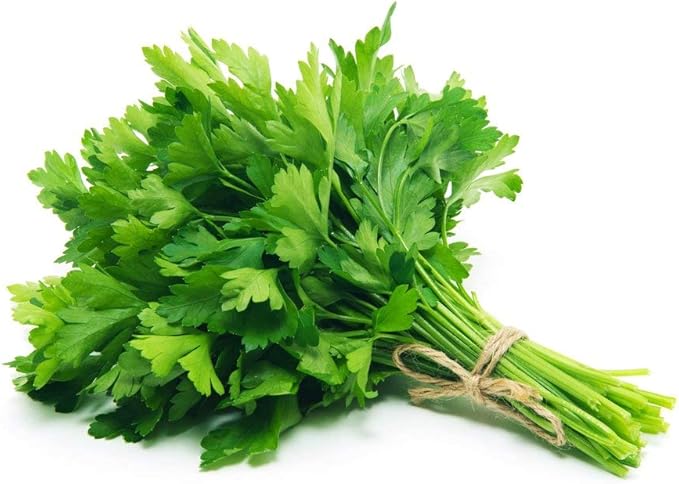
IL PREZZEMOLO – PARSLEY – パセリ
Il prezzemolo, un’erba che tutti conosciamo e che consumiamo abitualmente per aromatizzare insalate e pietanze, contiene un principio attivo, l’apiolo, che assunto in dosi eccessive può diventare nocivo. Ciò non significa che occorre bandire il prezzemolo dalla propria dieta ma soltanto che, nel preparare una tisana con le odorose foglie, (è efficace in caso di mal di stomaco!) occorrerà rispettare scrupolosamente le dosi indicate nella ricetta.
Ma non è tutto. Per sfruttare al meglio le proprietà curative delle erbe è indispensabile anche tener conto di alcune regole al momento della raccolta. Per esempio tutte le piante vanno raccolte tra la primavera e l’autunno, in giornate assolate e nella tarda mattinata, perché foglie e fiori siano perfettamente asciutti. Vanno utilizzati inoltre solo gli esemplari più belli e sani, che crescono in zone poco trafficate e quindi poco inquinate. Nel caso specifico del peperoncino il periodo di raccolta più indicato corrisponde alla tarda estate, quando le bacche sono perfettamente mature, rosse e carnose. Evitate, infine, di strappare brutalmente gambi e foglie e, se vi è possibile, anche di utilizzare attrezzi metallici come forbici o coltelli. Secondo gli erboristi più esperti ogni stelo, ogni fiore, deve essere delicatamente staccato con le mani e quindi maneggiato con cura e riposto in un cesto. Perché se avete deciso di utilizzare le piante dovete anche ricordare che i migliori risultati si conseguono iniziando a rispettarle.
Parsley, an herb that we all know and that we usually consume to flavor salads and dishes, contains an active ingredient, apiol, which when taken in excessive doses can become harmful. This does not mean that you need to ban parsley from your diet but only that, when preparing a herbal tea with the fragrant leaves (it is effective in case of stomach ache!) you will need to scrupulously respect the doses indicated in the recipe.
But that is not all. To make the most of the healing properties of herbs it is also essential to take into account some rules at the time of harvesting. For example, all plants must be harvested between spring and autumn, on sunny days and in the late morning, so that the leaves and flowers are perfectly dry. Furthermore, only the most beautiful and healthy specimens should be used, which grow in areas with little traffic and therefore little pollution. In the specific case of chili pepper, the most suitable harvest period corresponds to late summer, when the berries are perfectly ripe, red and fleshy. Finally, avoid brutally tearing stems and leaves and, if possible, also avoid using metal tools such as scissors or knives. According to the most expert herbalists, each stem, each flower, must be delicately detached with the hands and then handled with care and placed in a basket. Because if you have decided to use plants you must also remember that the best results are achieved by starting to respect them.
パセリは誰もが知っており、サラダや料理の味付けによく摂取するハーブですが、有効成分であるアピオールが含まれており、過剰に摂取すると有害になる可能性があります。これはパセリを食事から禁止する必要があるという意味ではなく、香りのよい葉でハーブティーを作るとき(腹痛の場合に効果的です!)、レシピに示されている用量を注意深く守る必要があるということだけです。
しかし、それだけではありません。ハーブの治癒特性を最大限に活用するには、収穫時にいくつかのルールを考慮することも不可欠です。たとえば、すべての植物は春から秋の間、晴れた日の早朝に収穫し、葉と花が完全に乾燥するようにする必要があります。さらに、交通量が少なく汚染の少ない地域で育つ、最も美しく健康的な標本のみを使用する必要があります。唐辛子の場合、収穫に最も適した時期は、果実が完全に熟して赤く肉厚になる夏の終わりに相当します。最後に、茎や葉を乱暴に引き裂くことは避け、可能であればハサミやナイフなどの金属製の道具を使用することも避けてください。最も熟練した薬草学者によると、各茎、各花は手で慎重に切り離され、慎重に扱われ、バスケットに入れられます。植物を使用することに決めた場合は、それらを尊重し始めることで最良の結果が得られることも覚えておく必要があるからです。
LE PREPARAZIONI MEDICINALI
Medicinal Preparations 医薬品
Chi è già esperto di fitoterapia non avrà problemi a comprendere termini come infuso, decotto, macerazione e cataplasma. Ma poiché questo Blog è indirizzato forse più agli amanti del peperoncino in sé che non agli appassionati di erboristeria ho creduto utile chiarire dettagliatamente il significato delle varie preparazioni medicinali.
Those who are already experts in phytotherapy will have no problem understanding terms such as infusion, decoction, maceration and poultice. But since this blog is perhaps aimed more at lovers of chilli pepper itself than at herbal medicine enthusiasts, I thought it useful to clarify in detail the meaning of the various medicinal preparations.
すでに植物療法の専門家であれば、注入、煎じ薬、浸軟、湿布などの用語を問題なく理解できるでしょう。しかし、このブログはおそらく漢方薬愛好家よりも唐辛子自体の愛好家を対象としているので、さまざまな薬の意味を詳細に明らかにすることは有益だと思いました。
INFUSO O TISANA
Infusion or Tea – 煎じ薬またはお茶
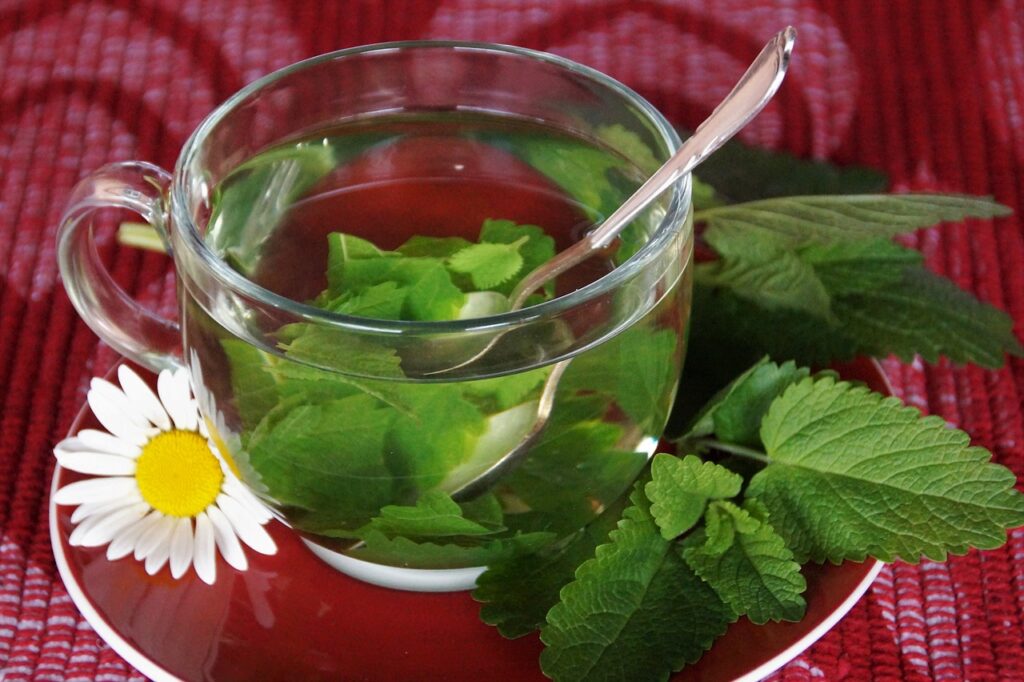
Si prepara versando sopra il vegetale essiccato, pestato, o sminuzzato una tazza d’acqua bollente. Quindi si copre con un coperchio, si lascia in infusione per una decina di minuti circa (oppure il tempo espressamente indicato nella ricetta) e quindi si filtra e si beve. Se desiderate dolcificare utilizzate sempre del miele in sostituzione dello zucchero.
It is prepared by pouring a cup of boiling water over the dried, crushed or chopped vegetable. Then it is covered with a lid, left to infuse for about ten minutes (or the time expressly indicated in the recipe) and then filtered and drunk. If you want to sweeten, always use honey instead of sugar.
乾燥、粉砕、または刻んだ野菜にカップ1杯の熱湯を注ぐことによって調製されます。次に、蓋をして約10分間(またはレシピに明示されている時間)注入してから、濾して飲みます。甘みを加えたい場合は、砂糖の代わりに必ず蜂蜜を使用してください。
DECOTTO
Decoction煎じ薬
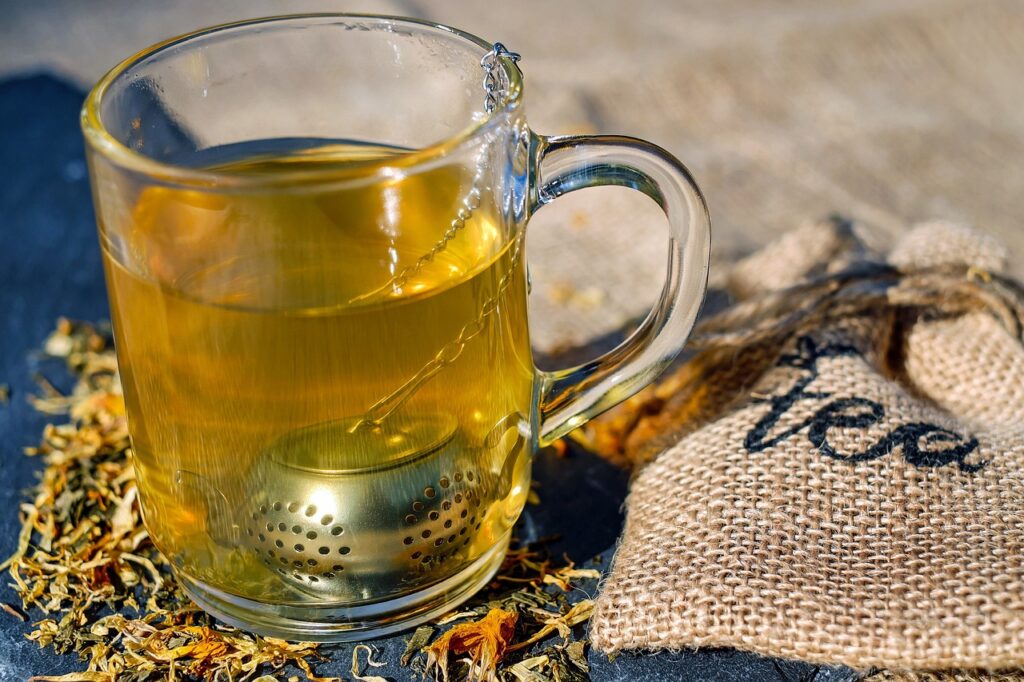
Vi occorrerà una pentola di terracotta oppure smaltata per mettere a scaldare dell’acqua. Quando bolle gettate le erbe, abbassate il fuoco, coperchiate e lasciate cuocere dai quindici ai trenta minuti. Quindi filtrate e bevete.
You will need a terracotta or enamel pot to heat some water. When it boils, throw in the herbs, lower the heat, cover, and leave to cook for fifteen to thirty minutes. Then filter and drink.
水を加熱するにはテラコッタまたはホーローの鍋が必要です。沸騰したらハーブを入れ、火を弱め、蓋をして15〜30分間煮ます。
その後濾して飲みます。
SUCCO
Juice-ジュース
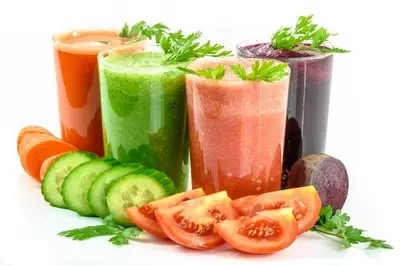
Pestate il vegetale fresco in un mortaio fino ad estrarne tutto il succo. Oppure potete utilizzare la centrifuga elettrica. Ricordate comunque che il succo si conserva per breve tempo e deve essere riposto in frigorifero.
Pound the fresh vegetable in a mortar until all the juice is extracted. Or you can use the electric centrifuge. However, remember that the juice lasts for a short time and must be stored in the refrigerator.
新鮮な野菜を乳鉢で、汁がすべて抽出されるまで叩きます。または、電気遠心分離機を使用することもできます。ただし、ジュースの保存期間は短いため、冷蔵庫で保管する必要があることに注意してください。
OLIO AROMATICO
Aromatic oil-アロマオイル
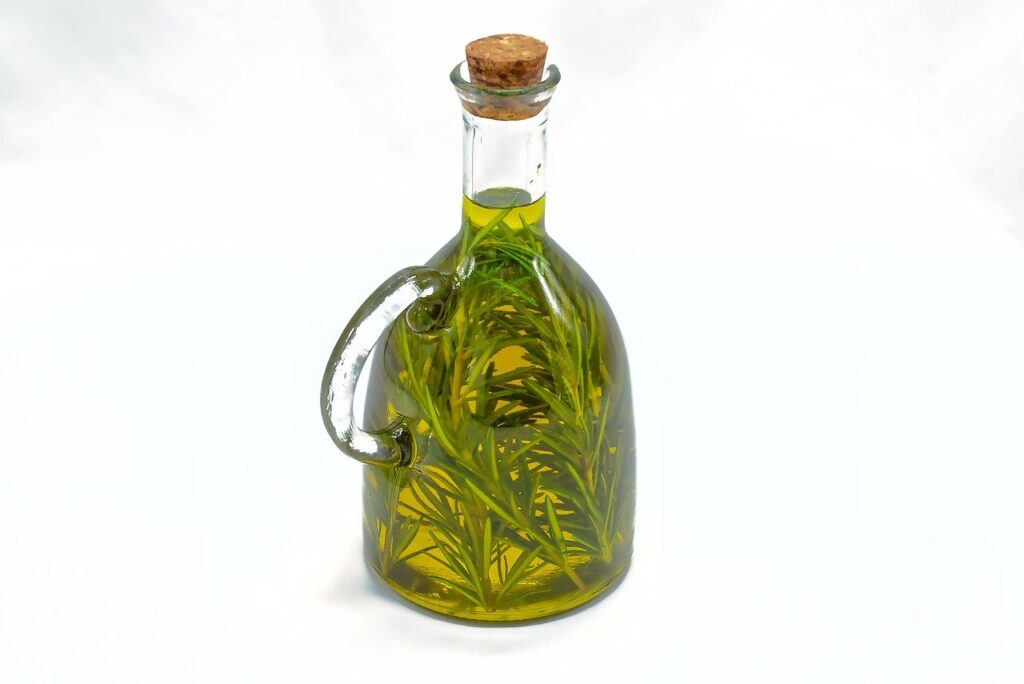
Infilate in una bottiglia preferibilmente di vetro scuro le erbe aromatiche e poi coprite con olio d’oliva fino all’orlo. Tappate e conservate il preparato in un luogo buio e fresco per una settimana. Trascorso tale tempo potrete iniziare ad utilizzarlo.
Place the aromatic herbs in a bottle, preferably made of dark glass, and then cover with olive oil up to the brim. Cap and store the preparation in a dark, cool place for a week. After this time you can start using it.
香り豊かなハーブを瓶(できれば濃い色のガラス製)に入れ、オリーブオイルを縁まで注ぎます。キャップをして、暗く涼しい場所に 1 週間保管します。この時間が経過すると、使用を開始できます。
OLIO MEDICAMENTOSO
Medicated oil -薬用オイル
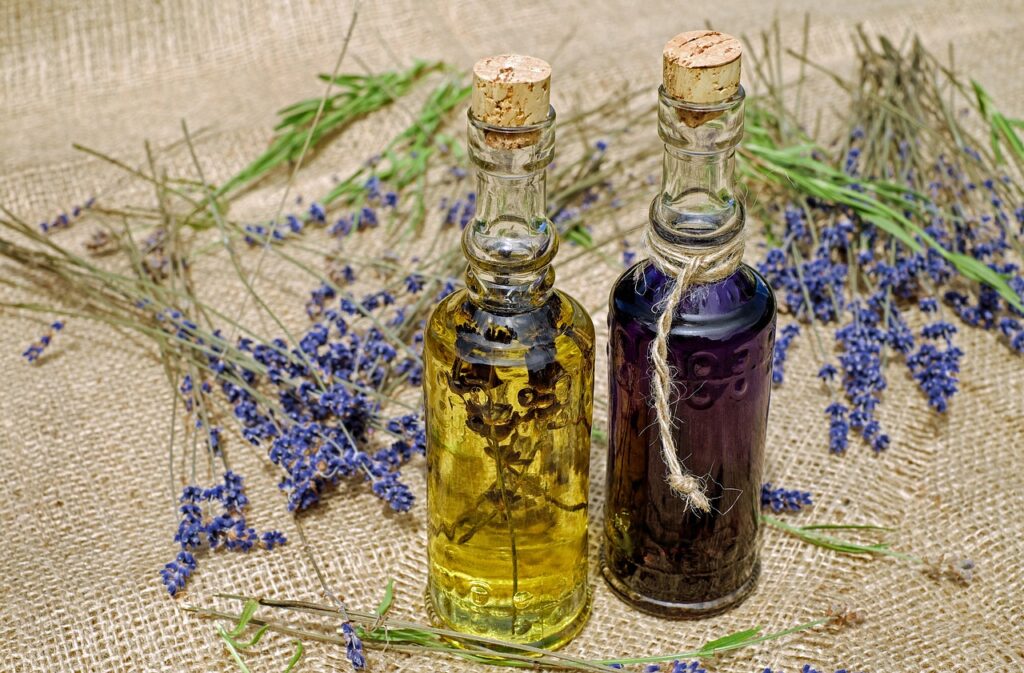
Infilate le erbe in una bottiglia di vetro trasparente e coprite fino all’orlo con olio di semi. Lasciate il recipiente sotto il sole per circa tre settimane e poi utilizzate il liquido per farne frizioni o massaggi.
Place the herbs in a transparent glass bottle and cover to the brim with seed oil. Leave the container under the sun for about three weeks and then use the liquid to make rubs or massages.
ハーブを透明なガラス瓶に入れ、シードオイルをふちまで注ぎます。容器を太陽の下に約 3 週間放置し、その後液体をこすったりマッサージしたりするために使用します。
TINTURA ALCOLICA
Alcoholic tinctureアルコールチンキ剤
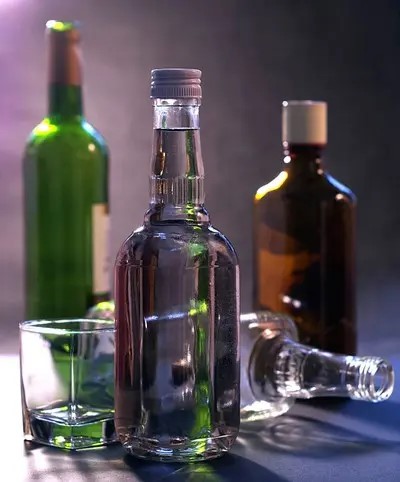
Si tratta di una macerazione di erbe in una determinata quantità di vino bianco, oppure di grappa, oppure di alcol a 60°.
.It is a maceration of herbs in a certain quantity of white wine, or grappa, or 60° alcohol.
これは、一定量の白ワイン、グラッパ、または 60 度のアルコールにハーブを浸漬したものです。
UNGUENTO
Ointment 軟膏
Estraete dal vegetale il succo che contiene, pestandolo in un mortaio o triturandolo. Versate tale succo in olio bollente e fate friggere qualche istante, quindi lasciate riposare per dodici ore. Trascorso tale tempo tornate a riscaldare il preparato e quando è liquido filtratelo accurata- mente. Utilizzate l’unguento per farne dei massaggi.
Extract the juice it contains from the vegetable by crushing it in a mortar or grinding it. Pour this juice into boiling oil and fry for a few moments, then leave to rest for twelve hours. After this time, heat the preparation again and when it is liquid, filter it carefully. Use the ointment for massages.
野菜を乳鉢で潰すかすりつぶして、野菜に含まれる汁を抽出します。このジュースを沸騰した油に注ぎ、数分間揚げ、12時間放置します。この時間が経過したら、調製物を再度加熱し、液体になったら、注意深く濾過します。マッサージには軟膏を使用してください。
CATAPLASMA
湿布 Poultice
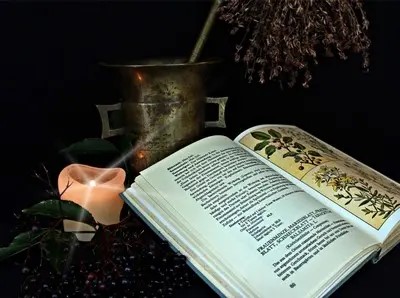
Scaldate a vapore le erbe che vi occorrono, osservando un tempo doppio se si tratta di vegetali essiccati. Quindi deponete le erbe ancora calde in una garza sterile e appoggiatela sopra la parte del corpo interessata.
Steam heat the herbs you need, observing double the time if they are dried vegetables. Then place the herbs while still warm in sterile gauze and place it over the affected part of the body.
必要なハーブを蒸気で加熱します。乾燥野菜の場合は 2 倍の時間を観察します。次に、温かいうちにハーブを滅菌ガーゼに入れ、体の患部に置きます。
ORIGINI E STORIA DEL PEPERONCINO
Origins and history of chili pepper 唐辛子の起源と歴史
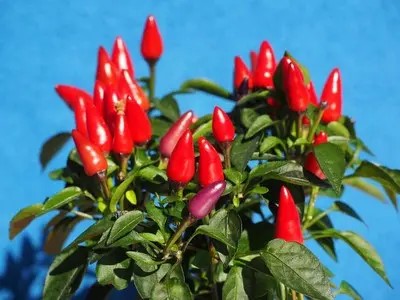
L’utilizzo del peperoncino si diffonde in seguito alle grandi esplorazioni del pianeta, e precisamente dopo il secondo viaggio di Cristoforo Colombo in America. Precedentemente, infatti, nessun antico testo greco, ebreo, arabo o cinese tratta di questa spezia. È legittimo supporre, dunque, che in Europa il Capsicum (dal latino “capsa” cioè scatola, riferito probabilmente alla bacca che contiene i semi) fosse del tutto sconosciuto.
Nel 1514 Cristoforo Colombo torna dalle Americhe con le tre caravelle cariche di preziosi prodotti: dalla patata al mais, dal tabacco all’agave e, naturalmente, anche con un grande quantitativo di Chili, come veniva allora denominato, nelle Americhe, il peperoncino. Colombo lo importa da Haiti ma era senz’altro coltivato anche in Brasile e in Giamaica, forse addirittura in epoca precolombiana, poiché se ne sono trovate testimonianze su alcune sculture di pietra tolteche.
Nel vecchio continente il Capsicum riscuote un immediato successo proprio per il suo gusto intenso, piccante, così simile a quello del pepe, ricercatissima e costosa spezia importata dall’oriente, ma anche per altre indubbie qualità. Diego Alvarez Chanca, medico spagnolo che accompagnò Colombo nella seconda spedizione, si era già reso conto, infatti, che oltre ad essere un ottimo condimento il peperoncino era estremamente efficace per conservare i cibi. E a quei tempi mantenere intatte nel tempo carni e pesci non era certo impresa facile!
Il peperoncino venne quindi subito mescolato ai più diversi preparati: l’aroma pungente, unito a quello delle altre spezie, tipo salvia, noce moscata, cumino e chiodo di garofano, mascherava perfettamente il gusto della decomposizione dell’alimento ma in più, grazie al grande potere antiossidante dal Capsicum, contribuiva a preservarlo più a lungo.
Mattioli, famoso medico senese, nel 1568 descrisse abbondantemente la nuova spezia nel suo trattato sulle piante, definendola Pepe d’India e Pepe cornuto o Siliquastro ed esaltandone le virtù curative.
Anche Castore Durante, nel 1585 in un nuovo erbario, elogia il gusto deciso del Capsicum giudicandolo migliore di quello del pepe, e suggerisce un eccellente condimento fatto di semi e bacche di peperoncino pestati e bolliti nel brodo. Ma c’è senz’altro un’altra ragione per cui il Capsicum si diffuse tanto rapidamente in tutta Europa: era estremamente conveniente! Fino ad allora, infatti, le spezie erano esclusivo appannaggio dei ricchi, poiché crescevano soltanto in oriente ed importarle costava moltissimo. Ma il peperoncino, che ama i climi caldi, ma non necessariamente esotici, lungo le sponde del Mediterraneo trovò un habitat ideale e attecchi immediatamente. Le coltivazioni si diffusero quindi in tutto il sud d’Italia e nel nord d’Africa, dove tutt’oggi sono fiorenti e costituiscono una nota caratteristica.
Anche i poveri ebbero dunque la loro preziosa spezia, che andò ad insaporire e ad esaltare persino i cibi più semplici, ma che divenne, soprattutto, un pratico medicinale. Non va dimenticato, infatti, che il fattore antiossidante del Capsicum giova anche agli esseri umani e soprattutto a quelli che vivono negli ambienti più caldi, dove le fermentazioni alimentari sono un rischio frequente. Inoltre, in un periodo storico in cui le malattie da avitaminosi erano una piaga sociale, il peperoncino portò immediato giovamento, essen- do tra i vegetali più ricchi in tal senso. La fama della preziosa spezia si diffuse poi rapidamente anche verso l’Europa orientale. In Ungheria, dove viene consumata polverizzata e denominata “paprika” andò ad insaporire addirittura il piatto nazionale, il famoso “gulasch” (vedi ricetta nell’ultimo capitolo). In India se ne coltivarono subito tre diverse varietà e con grande successo, tant’è che oggi, in questo Paese, si producono una quantità incredibile di peperoni d’ogni specie.
Il “curry”, poi, molto utilizzato in oriente, non è altro che una polvere aromatizzante a base di peperoncino rosso. In Cina invece, la piccante bacca diventa l’ingrediente principale per una salsa saporita che spesso sostituisce, in tavola, quella di soia. Insomma si può ben dire che, tutt’oggi, la fama del peperoncino non ha confini.
The use of chilli pepper spread following the great explorations of the planet, and precisely after the second voyage of Christopher Columbus to America. Previously, in fact, no ancient Greek, Jewish, Arabic or Chinese text deals with this spice. It is legitimate to assume, therefore, that in Europe Capsicum (from the Latin “capsa” meaning box, probably referring to the berry that contains the seeds) was completely unknown.
In 1514 Christopher Columbus returned from the Americas with three caravels loaded with precious products: from potatoes to corn, from tobacco to agave and, naturally, also with a large quantity of Chili, as chili pepper was then called in the Americas. Columbus imported it from Haiti but it was certainly also cultivated in Brazil and Jamaica, perhaps even in pre-Columbian times, as evidence of it has been found on some Toltec stone sculptures.
In the old continent, Capsicum enjoyed immediate success precisely because of its intense, spicy taste, so similar to that of pepper, a highly sought-after and expensive spice imported from the East, but also for other undoubted qualities. Diego Alvarez Chanca, a Spanish doctor who accompanied Columbus on the second expedition, had already realised, in fact, that in addition to being an excellent condiment, chili pepper was extremely effective for preserving food. And in those days, keeping meat and fish intact over time was certainly not an easy task!
The chili pepper was then immediately mixed with the most diverse preparations: the pungent aroma, combined with that of other spices, such as sage, nutmeg, cumin and clove, perfectly masked the taste of the decomposition of the food but furthermore, thanks to the great antioxidant power from Capsicum, helped to preserve it for longer.
Mattioli, a famous Sienese doctor, described the new spice in detail in his treatise on plants in 1568, calling it Prickly Pepper and Horned Pepper or Siliquastro and extolling its healing virtues.
Even Castore Durante, in 1585 in a new herbarium, praised the strong taste of Capsicum, judging it to be better than that of pepper, and suggested an excellent condiment made of chilli seeds and berries crushed and boiled in broth. But there is certainly another reason why Capsicum spread so quickly throughout Europe: it was extremely convenient! Until then, in fact, spices were the exclusive prerogative of the rich, since they only grew in the East and importing them cost a lot. But the chili pepper, which loves warm but not necessarily exotic climates, found an ideal habitat along the shores of the Mediterranean and took root immediately. The cultivations then spread throughout southern Italy and northern Africa, where they are still thriving today and constitute a well-known characteristic.
Even the poor therefore had their precious spice, which flavored and enhanced even the simplest foods, but which became, above all, a practical medicine. It should not be forgotten, in fact, that the antioxidant factor of Capsicum also benefits humans and especially those who live in warmer environments, where food fermentations are a frequent risk. Furthermore, in a historical period in which vitamin deficiency diseases were a social plague, chilli pepper brought immediate benefits, being among the richest vegetables in this sense. The fame of the precious spice then quickly spread to Eastern Europe. In Hungary, where it is consumed powdered and called “paprika”, it even flavored the national dish, the famous “goulash” (see recipe in the last chapter). In India, three different varieties were immediately cultivated with great success, so much so that today, in this country, an incredible quantity of peppers of every species are produced.
The “curry”, then, widely used in the East, is nothing more than a flavoring powder based on red chili pepper. In China, however, the spicy berry becomes the main ingredient for a tasty sauce that often replaces soy sauce on the table. In short, it can be said that, even today, the fame of chilli pepper has no boundaries.
唐辛子の使用は、地球の大探検の後、そして正確にはクリストファー・コロンブスのアメリカへの二度目の航海の後に広がりました。実際、これまで、古代ギリシャ語、ユダヤ語、アラビア語、中国の文書でこのスパイスを扱ったものはありませんでした。したがって、ヨーロッパではトウガラシ(箱を意味するラテン語の「カプサ」に由来し、おそらく種子が入っている果実を指す)はまったく知られていなかったと考えるのが正当である。
1514 年、クリストファー コロンブスは、ジャガイモからトウモロコシ、タバコからリュウゼツランに至るまで、貴重な製品を積んだ 3 隻のキャラベル船でアメリカ大陸から帰国しました。また、当然のことながら、当時アメリカ大陸で唐辛子と呼ばれていたように、大量の唐辛子も積んでいました。コロンブスはハイチからそれを輸入しましたが、いくつかのトルテカの石の彫刻でその証拠が発見されているように、ブラジルやジャマイカでも、おそらくコロンブス以前の時代にも栽培されていたことは確かです。
旧大陸では、トウガラシがすぐに成功を収めたのは、その強烈でスパイシーな味が、東洋から輸入された非常に人気があり高価なスパイスであるコショウの味に非常によく似ているためでしたが、他の疑いの余地のない品質のおかげでもありました。コロンブスの第 2 回遠征に同行したスペイン人医師ディエゴ アルバレス チャンカは、実際、唐辛子が優れた調味料であるだけでなく、食品の保存にも非常に効果的であることにすでに気づいていました。当時、肉や魚を長期間無傷で保存することは決して簡単な作業ではありませんでした。
その後、唐辛子はすぐに最も多様な調味料と混合されました。セージ、ナツメグ、クミン、クローブなどの他のスパイスの香りと組み合わせた刺激的な香りは、食品の分解の味を完全に隠しましたが、さらに、トウガラシの優れた抗酸化力により、長期保存が可能になりました。
シエナの有名な医師マッティオーリは、1568 年の植物に関する論文の中でこの新しいスパイスを詳細に説明し、それをウチワサボテンとツノコショウ、またはシリクアトロと呼び、その治癒効果を称賛しました。
カストル・デュランテでさえ、1585年に新しい標本でトウガラシの強い味を賞賛し、トウガラシの方がコショウよりも優れていると判断し、唐辛子の種子と果実を粉砕してスープで煮た優れた調味料を提案しました。しかし、トウガラシがこれほど急速にヨーロッパ中に広まったのには別の理由があることは確かです。それは非常に便利だったからです。実際、それまでスパイスは東部でのみ栽培され、輸入には多額の費用がかかるため、スパイスは富裕層の独占的な特権でした。しかし、温暖ではあるが必ずしもエキゾチックな気候ではない唐辛子は、地中海沿岸に理想的な生息地を見つけ、すぐに根を張りました。その後、栽培はイタリア南部とアフリカ北部に広がり、今日でも盛んに栽培されており、よく知られた特徴となっています。
したがって、貧しい人々さえも貴重なスパイスを持っており、それは最も単純な食べ物でさえ風味を付け、強化し、そして何よりも実用的な薬になりました。実際、トウガラシの抗酸化因子は人間、特に食品発酵の危険が頻繁にある暖かい環境に住む人々にも利益をもたらすことを忘れてはなりません。さらに、ビタミン欠乏症が社会的疫病であった歴史的時代に、唐辛子はその意味で最も豊かな野菜の一つであり、即座に恩恵をもたらしました。その後、この貴重なスパイスの名声はすぐに東ヨーロッパに広がりました。ハンガリーでは、粉末にして「パプリカ」と呼ばれ、国民食である有名な「グーラッシュ」の風味付けにも使われています(最後の章のレシピを参照)。インドでは、3 つの異なる品種の栽培がすぐに大成功を収め、今日この国ではあらゆる種類の唐辛子が信じられないほどの量で生産されています。
つまり、東洋で広く使われている「カレー」は、赤唐辛子をベースにした粉末の香味料にすぎません。しかし、中国では、スパイシーなベリーがおいしいソースの主な材料となり、食卓にある醤油の代わりになることがよくあります。つまり、今日でも唐辛子の名声には限界がないと言えます。
LE VARIETÀ
The variety – 多様性
Il peperoncino rosso appartiene alla grande famiglia delle solanacee, insieme a più di 80 generi di piante e a circa 2200 specie diverse. Vi fanno parte, per esempio, la patata, il pomodoro, la melanzana e il tabacco; ma anche la belladonna, lo stramonio, il giusquiamo, cioè piante notoria- mente tossiche seppur utilizzate in medicina, e la Datura, un’erba ritenuta afrodisiaca fin dall’antichità.
Il peperoncino comunque appartiene al genere Capsicum, e tutte le varietà comunemente coltivate vengono meglio definite “Capsicum annuum”, cioè Capsicum annuale.
Esistono infinite varietà di peperoni ma pare che all’origine fossero tutte piccanti e poco gradevoli a causa dell’alto contenuto di una so- stanza irritante chiamata capsicina. Solo attraverso continui incroci l’uomo è riuscito ad ottenere varietà dolci e più gradevoli, cioè quelle che consumiamo abitualmente crude oppure arrostite.
Più i peperoni sono piccoli più il gusto diviene acre e pungente. Gli esemplari più dolci infatti sono molto grossi (alcune specie giganti raggiungono persino i 30 centimetri!) di colore giallo, rosso o verde, mentre le specie a cornetto, piccole e allungate, di solito verdi, sono utilizzate per farne sottaceti. Il peperoncino rosso piccante è lungo non più di 5 centimetri e a maturazione completa si presenta di un bel colore rosso lucido. È piccante la buccia ma anche i semi interni, presenti in grande quantità.
Considerate le innumerevoli varietà esistenti di peperoni e peperoncini tentare una precisa classificazione sarebbe difficoltoso e probabilmente superfluo, anche perché le differenze sono spesso minime e poco significative. Ci limiteremo quindi a sottolineare che il Capsicum Annuum è una pianta erbacea glabra, alta dai 40 ai 70 centimetri, con foglie alterne, picciolate e lucide, fiori ascellari bianchi con calice a cinque divisioni, fusto angoloso dicotomo e frutto a bacca, carnoso, a due o tre scompartimenti, di colore rosso, giallo o verde.
Le cultivar più comuni in Italia sono il “rosso quadrato d’Asti”, il “giallo grosso di Nocera” e il “California Wonder” per quanto riguarda i peperoni dolci, il “peperoncino di Caienna” e il “peperoncino del Veneto” per quanto riguarda le qualità piccanti.
Ricordiamo, inoltre, che esistono diverse polveri e salse che possono essere utilizzate in sostituzione del frutto fresco. Le più note sono:
The red chilli pepper belongs to the large Solanaceae family, together with more than 80 genera of plants and around 2200 different species. This includes, for example, potatoes, tomatoes, aubergines and tobacco; but also belladonna, jimsonweed, henbane, i.e. notoriously toxic plants although used in medicine, and Datura, an herb considered an aphrodisiac since ancient times.
However, the chili pepper belongs to the Capsicum genus, and all the commonly cultivated varieties are better defined as “Capsicum annuum”, i.e. annual Capsicum.
There are infinite varieties of peppers but it seems that originally they were all spicy and not very pleasant due to the high content of an irritant substance called capsicin. Only through continuous cross-breeding has man managed to obtain sweeter and more pleasant varieties, i.e. those that we usually consume raw or roasted.
The smaller the peppers, the more acrid and pungent the taste becomes. The sweetest specimens are in fact very large (some giant species even reach 30 centimetres!) and yellow, red or green in colour, while the small, elongated horn-shaped species, usually green, are used to make pickles. The hot red pepper is no more than 5 centimetres long and when fully ripe is a beautiful shiny red colour. The skin is spicy, but so are the seeds inside, which are present in large quantities.
Given the countless existing varieties of peppers and chillies, attempting a precise classification would be difficult and probably superfluous, not least because the differences are often minimal and insignificant. We will therefore limit ourselves to pointing out that Capsicum Annuum is a glabrous herbaceous plant, between 40 and 70 centimetres tall, with alternate, petiolate, shiny leaves, white axillary flowers with a five-divided calyx, an angular dichotomous stem and a berry-like, fleshy fruit with two or three compartments, red, yellow or green in colour.
The most common cultivars in Italy are ‘rosso quadrato d’Asti’, ‘giallo grosso di Nocera’ and ‘California Wonder’ for sweet peppers, and ‘Cayenne pepper’ and ‘Veneto pepper’ for hot varieties.
It should also be noted that there are various powders and sauces that can be used instead of the fresh fruit. The best known are:
赤唐辛子は、80 属以上、約 2,200 種の異なる植物とともに大きなナス科に属します。これには、ジャガイモ、トマト、ナス、タバコなどが含まれます。ベラドンナ、ジムソンウィード、ヘンバネ、つまり薬に使用されているものの悪名高い有毒植物、そして古代から媚薬と考えられているハーブであるダチュラも含まれます。
しかし、唐辛子はトウガラシ属に属しており、一般的に栽培されている品種はすべて「Capsicum annuum」、つまり一年生トウガラシと定義する方が適切です。
唐辛子の種類は数え切れないほどありますが、元々はカプシシンという刺激物質が多く含まれているため、辛くてあまり美味しくないものばかりだったそうです。継続的な交配によってのみ、人類はより甘くてより心地よい品種、つまり私たちが通常生またはローストして消費する品種を手に入れることができました。
トウガラシは、小さくなるほど辛味が強くなる。甘みの強いものは非常に大きく(30センチに達する巨大種もある!)、黄色や赤、緑色をしているが、小さくて細長い角のような形をしたものは、たいてい緑色で、ピクルスに使われる。赤唐辛子は長さ5センチ以下で、完熟すると光沢のある美しい赤色になる。皮も辛いが、中の種も大量に存在する。
トウガラシや唐辛子には数え切れないほどの品種が存在するため、正確な分類を試みることは困難であり、おそらく余計なことであろう。したがって、トウガラシは、高さ40~70センチ、葉は互生し、葉柄があり、光沢があり、萼が5つに分かれた白い腋の花が咲き、茎は角ばった二股で、果実は赤、黄、緑色で、2つか3つに分かれた果実のような多肉質である。
イタリアで最も一般的な品種は、スイートペッパーでは’rosso quadrato d’Asti’、’giallo grosso di Nocera’、’California Wonder’、ホットペッパーでは’Cayenne pepper’、’Veneto pepper’である。
また、生の果実の代わりに使える様々なパウダーやソースもある。よく知られているのは
LA PAPRIKA
The Paprika – パプリカ
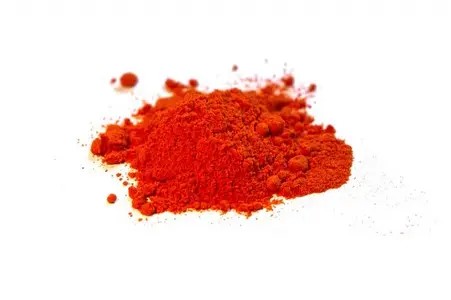
originaria dell’Ungheria e prodotta con varietà diverse di peperoncino: la “Koe- nigs” è molto forte poiché si ottiene polveriz- zando l’intera bacca, mentre la “Rosenpaprika” è meno pungente poiché vengono eliminati i semi prima della macinatura;
Paprika, originating in Hungary and produced from different varieties of paprika: ‘Koe- nigs’ is very strong as it is obtained by pulverising the entire berry, while ‘Rosenpaprika’ is less pungent as the seeds are removed before grinding.
パプリカはハンガリー原産で、異なる品種から作られる。「コエ・ニグス」は実全体を粉砕して得られるため非常に辛味が強く、「ローゼンパプリカ」は粉砕する前に種を取り除くため辛味が少ない。
IL TABASCO The Tabasco タバスコ
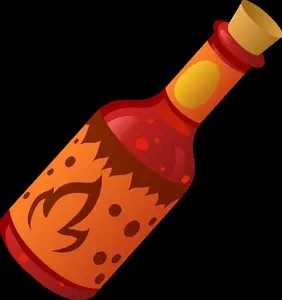
il Tabasco, una salsa fortissima, originaria della
Louisiana, che viene venduta in bottigliette munite di contagocce. È a base di aceto, sale e peperoncino rosso;
Tabasco, a very strong sauce, originally from
Louisiana, which is sold in small bottles with droppers. It is based on vinegar, salt and red chilli pepper;
タバスコはルイジアナ発祥の非常に強いソースである。
ルイジアナ州が原産で、スポイト付きの小瓶で売られている。酢、塩、赤唐辛子がベースになっている;
IL CURRY – The Curry – カレー
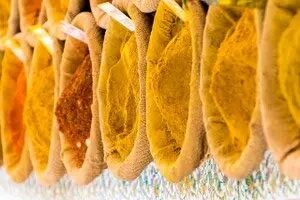
il Curry, cioè una miscela di varie spezie ( a volte addirittura trenta!) tra cui il peperoncino rosso. È diffusissimo in oriente, per aroma- tizzare agnello, montone e pesci;
Curry, a mixture of various spices (sometimes as many as thirty!) including red chili pepper. It is very popular in the East to flavor lamb, mutton, and fish
カレーは、赤唐辛子を含む様々なスパイス(時には30種類も!)を混ぜ合わせたもの。東洋ではラム、マトン、魚の風味付けによく使われる;
IL CHILLY – The Chilli – 唐辛子
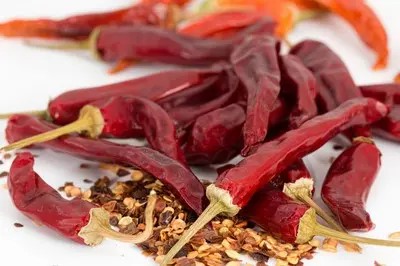
il Chili, usato largamente in Messico nelle zuppe di carne, fagioli e mais e preparato secondo ricette molto diverse. Pare che ne esistano più di trenta varietà, più o meno dolci, in cui spesso viene mescolato persino il cioccolato;
Chili is widely used in Mexico in meat, beans, and corn soups and is prepared according to very different recipes. There are more than thirty varieties, more or less sweet, in which even chocolate is often mixed.
メキシコではスープに広く使われているチリ。
肉、豆、トウモロコシのスープに広く使われ、非常に異なるレシピで調理される。どうやら30種類以上の品種があり、多かれ少なかれ甘く、チョコレートもよく混ぜられているようだ。
IL Chutney – The Chutney – チャツネ
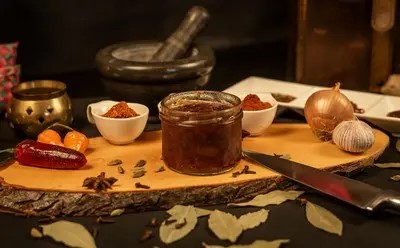
il Chutney, una gustosa preparazione indiana ottenuta mescolando peperoncino rosso (preferibilmente fresco) polpa di cocco, coriandolo fresco, sale e succo di limone. Con tale pasta si condiscono carni di pollo e di tacchino
La miglior polvere di peperoncino, comunque, è forse quella che ci si può preparare da sè, in casa. Si tratta semplicemente di arrostire dei pepe- roncini rossi essiccati in padella, senza condimenti e senza farli bruciacchiare, per poi macinarli con cura fino ad ottenere una polvere finissima.
.Chutney, a tasty Indian preparation made by mixing red chilli (preferably fresh) coconut pulp, fresh coriander, salt and lemon juice. Chicken and turkey meat is seasoned with this paste.
The best chilli powder, however, is perhaps the one you can make yourself. It simply involves roasting dried red chili peppers in a pan without seasoning or burning them and then carefully grinding them to a fine powder.
チャツネは、赤唐辛子(できれば生)、ココナッツの果肉、生のコリアンダー、塩、レモン汁を混ぜて作る、インドのおいしい料理。鶏肉や七面鳥の肉はこのペーストで味付けされる。
しかし、最高のチリパウダーは、おそらく家庭で自分で作れるものだろう。乾燥赤唐辛子をフライパンで炒り、味付けも焦がしもせず、丁寧に細かく粉砕するだけだ。
COLTIVAZIONE E CONSERVAZIONE
Cultivation and storage – 栽培と保全
Il peperoncino rosso è una pianta annuale che predilige un clima caldo-temperato. Vive quindi senza problemi nel sud d’Italia ma anche al nord, se protetta da eventuali sbalzi di temperatura.
Chi non possiede un orto può seminare il peperoncino in vaso, sul balcone. Il tempo migliore per tale operazione è febbraio marzo, purché la stagione non sia particolarmente fredda. I semi, che si trovano in commercio in un paio di varietà, si distribuiscono in una cassettina di terriccio di medio impasto, fresco e leggero, a tre centimetri di profondità e ad una distanza di circa 30 centimetri l’uno dall’altro.
Quando appare la quinta foglia (la germinazione si completa in circa 15 giorni) le giovani piantine vanno trapiantate in un altro vaso op- pure nell’orto o nel giardino: ricordate che sono molto decorative con le loro bacche rosso brillante! Nel primo caso preparate il terriccio concimandolo con circa 20 chili di letame per ogni metro quadrato, interrandolo a circa 30 centimetri di profondità. Nel secondo caso, invece, spargete il concime sopra i vasi. Innaffiate le piantine una volta alla settimana, tagliando i rami più bassi perché si fortifichino tutti gli altri. Badate, inoltre, proteggere le bacche dal sole troppo intenso durante i mesi più caldi. Eventualmente spostate i vasi in un luogo ombreggiato per evitare che troppo calore comprometta la qualità dell’ortaggio.
Se desiderate scegliere dei semi per l’anno successivo toglieteli solo da bacche perfettamente sane: conserveranno per circa 5 anni la forza germinativa.
Infine rammentate di non seminare i peperoncini troppo vicini ad altre piante commestibili, poiché il gusto piccante si trasmetterebbe attra- verso le irrigazioni. Ciò significa, per esempio, che è sempre bene tenere lontani i peperoncini piccanti dai peperoni dolci, oppure cercate di seminare i primi in un terreno più basso, in modo che l’acqua delle innaffiature non possa andare ad intaccare gli altri ortaggi.
The chili pepper is an annual plant that prefers a warm-temperate climate. It therefore grows without any problems in the south of Italy, but also in the north if it is protected from temperature fluctuations.
Those who do not have a vegetable garden can sow chilli peppers in pots on the balcony. The best time for this is February March, as long as the season is not particularly cold. The seeds, which are commercially available in a couple of varieties, are spread in a small box of medium, fresh, light soil, three centimetres deep and about 30 centimetres apart.
When the fifth leaf appears (germination is completed in about 15 days), the young seedlings should be transplanted into another pot or into the vegetable garden or garden: remember that they are very decorative with their bright red berries! In the first case, prepare the soil by fertilising it with about 20 kilos of manure per square metre, burying it about 30 centimetres deep. In the second case, spread the fertiliser over the pots. Water the seedlings once a week, cutting off the lower branches so that all the others are fortified. Also take care to protect the berries from too much sun during the hottest months. If necessary, move the pots to a shady place to prevent too much heat from impairing the quality of the vegetable.
If you want to choose seeds for the following year, only take them from perfectly healthy berries: they will retain their germination power for about 5 years.
Finally, remember not to sow the chillies too close to other edible plants, as the spicy taste will be transmitted through irrigation. This means, for example, that it is always a good idea to keep hot peppers away from sweet peppers, or try to sow the former in shallower soil so that water from watering cannot affect the other vegetables.
唐辛子は一年草で、温暖な気候を好む。そのため、イタリアの南部では問題なく育つが、気温の変化から守ることができれば北部でも育つ。
家庭菜園を持たない人は、バルコニーに鉢植えで唐辛子を蒔くことができる。特に寒い季節でなければ、2月3月が適期だ。いくつかの品種が市販されている種を、深さ3センチ、30センチほどの間隔で、中くらいの新鮮で軽い土を入れた小さな箱にまく。
5枚目の葉が出たら(発芽は約15日で完了)、幼苗を別の鉢に移植するか、菜園や庭に植える!最初の場合、1平方メートルあたり20キロの肥料を施し、30センチほどの深さに埋めて土を整える。2つ目の場合は、肥料をポットの上に撒く。水やりは1週間に1回、下枝を切り落とし、他の枝が強化されるようにする。また、暑い時期には、実を日差しから守るように注意する。必要であれば、暑すぎて野菜の品質が損なわれるのを防ぐために、鉢を日陰に移動させる。
翌年用の種を選ぶ場合は、完全に健康な実から取ること。
最後に、唐辛子を他の食用植物に近づけすぎないように注意する。例えば、唐辛子とピーマンを離したり、ピーマンを浅めの土に蒔き、水やりの水が他の野菜に影響しないようにする。
Ed ora vediamo le malattie più frequenti
nelle giovani piantine:
Now we see the diseases most frequent in young seedlings:
そして今、若い苗に最も多く見られる病気がある。が最も多い:
1) tra le malattie crittogame, cioè causate da funghi, ricordiamo la peronospora del peperone; l’alternariosi, in cui il gambo si copre di macchie scure e la bacca secca e cade; la tracheomicosi, che subentra durante la fase di maturazione facendo ingiallire le foglie e morire la pianta;
2) le mosche bianche (aleurodidi) s’insediano sulla pagina inferiore della foglia che quindi dovrà essere sempre controllata ed eventual- mente cosparsa con prodotti specifici disin- festanti;
3) i pidocchi (afidi) attaccano il vegetale succhiandone la linfa e ne procurano il disseccamento;
4) il ragno rosso, che è un acaro minuscolo, punge le foglie macchiandole in molti punti: se la pianta non secca può diventare però oggetto di una virosi ed essere contagiata da diverse malattie
1) cryptogamic diseases, i.e. caused by fungi, include pepper downy mildew; alternariosis, in which the stem is covered with dark spots and the berry dries out and falls off; tracheomycosis, which occurs during the ripening phase, causing the leaves to turn yellow and the plant to die;
2) whiteflies (aleurodidae) settle on the underside of the leaf, which must therefore always be checked and, if necessary, sprinkled with specific de- festing products;
3) lice (aphids) attack the plant by sucking its sap and cause it to dry out;
4) the red spider, which is a tiny mite, stings the leaves, staining them in many places: if the plant does not dry out, however, it can become the subject of a virosis and be infected by various diseases
1) 菌類による病気には、トウガラシべと病、茎が黒い斑点で覆われ、果実が乾燥して落下するオルタナリア症、成熟期に発生し、葉が黄色くなり、株が枯れる気管菌症などがある;
2) コナジラミ(aleurodidae)は葉の裏側につくので、常にチェックし、必要に応じて特定の駆除剤を散布しなければならない;
3) シラミ(アブラムシ)は、樹液を吸って植物を攻撃し、乾燥させる;
4) 小さなダニであるアカグモが葉を刺し、葉のあちこちを染める:しかし、植物が乾燥しなければ、ビロシスの対象となり、様々な病気に感染する可能性がある。
CONSERVAZIONE
Preservation 保全
Le bacche di peperoncino vanno raccolte a fine estate, quando sono rosse e ben mature. Solo nel caso vogliate conservarle sott’aceto le sceglierete ancora verdi.
Legate i peperoncini a mazzetti, oppure infilateli con ago e filo e appendeteli ad essiccare in un luogo ventilato e non eccessivamente caldo. Meglio evitare la cucina poiché i vapori di cottura potrebbero pregiudicare la qualità del prodotto.
Le bacche possono essere anche essiccate nel forno a 75°, ma occorre fare molta attenzione poiché l’eccessivo calore spesso inibisce le virtù terapeutiche della pianta. Quando gli ortaggi sono ben secchi tritateli e poi macinate semi e bucce fino ad ottenere una polvere finissima, che sia facilmente assimilabile dall’organismo. Accertatevi sempre che non vi sfuggano pezzi più grossi poiché, aderendo alle pareti dello stomaco, possono causare irritazioni.
Chilli berries should be harvested in late summer, when they are red and ripe. Only in case you want to pickle them will you choose them still green.
Tie the chillies in bunches or thread them with a needle and thread and hang them up to dry in a ventilated and not excessively hot place. It is best to avoid the kitchen as the cooking vapours could impair the quality of the product.
The berries can also be dried in an oven at 75°, but care must be taken as excessive heat often inhibits the plant’s therapeutic virtues. When the berries are well dried, chop them and then grind the seeds and peels to a fine powder that is easily assimilated by the body. Always make sure that larger pieces do not escape as they can cause irritation by adhering to the stomach lining.
唐辛子の実は、夏の終わりに赤く熟したものを収穫する。ピクルスにする場合は、まだ青いものを選ぶ。
収穫した唐辛子を束にするか、針と糸で縛り、風通しがよく暑すぎない場所で乾燥させる。調理中の蒸気で品質が損なわれる恐れがあるので、台所は避けたほうがよい。
実を75度のオーブンで乾燥させることもできるが、過度の熱は植物の治療効果を阻害することが多いので注意が必要である。よく乾燥させたら、実をみじん切りにし、種と皮をすり潰し、体に吸収されやすい微粉末にする。胃の内壁に付着して炎症を起こすことがあるので、大きな実が逃げないように注意する。
IMPIEGO TERAPEUTICO
Therapeutic application -治療用
Come abbiamo sottolineato nei capitoli precedenti l’uso del peperoncino come medicinale è molto antico. Subito dopo la scoperta s’ini- ziarono già ad apprezzarne le virtù terapeutiche e a distanza di oltre 400 anni le cose non sono cambiante. Tutt’oggi la scienza ha confermato le proprietà del rosso frutto studiandone la composizione chimica.
Si è scoperto infatti che il Capsicum contiene l’alcaloide Capsicina (è quello che conferisce il gusto piccante), l’olio resina Capsicina, l’olio stereo Capsicolo, e poi le vitamine A, B2, C (questa in grande quantità) E, PP, K2; rame, potassio e altri sali minerali, pectina, acidi grassi e lecitina. Si può ben dire, dunque, che il peperoncino rosso è un salutare concentrato di principi vitali indispensabili al nostro organismo, e medici e studiosi l’hanno confermato. Ma vediamo più dettagliatamente come trarre beneficio dalla piccante spezia.
As we pointed out in the previous chapters, the use of chilli peppers as a medicine is very ancient. Soon after its discovery, people began to appreciate its therapeutic virtues and over 400 years later, things have not changed. Even today, science has confirmed the properties of the red fruit by studying its chemical composition.
In fact, it has been discovered that Capsicum contains the alkaloid Capsicin (this is what gives it its spicy taste), the resin oil Capsicin, the stereo oil Capsicum, and then vitamins A, B2, C (this one in large quantities) E, PP, K2; copper, potassium and other minerals, pectin, fatty acids and lecithin. It is safe to say, therefore, that red chilli peppers are a healthy concentrate of vital principles that are indispensable to our organism, and doctors and scientists have confirmed this. But let us look in more detail at how to benefit from the spicy spice.
前の章で指摘したように、唐辛子の薬としての利用は非常に古い。唐辛子が発見された直後から、人々はその治療効果を高く評価し始め、400年以上経った今でも状況は変わっていない。今日でも、科学はその化学組成を研究することによって、赤い果実の特性を確認している。
実際、トウガラシには、アルカロイドのカプサイシン(これがトウガラシのスパイシーな味を生み出している)、樹脂オイルのカプサイシン、ステレオオイルのトウガラシ、それからビタミンA、B2、C(これは大量に含まれている)E、PP、K2、銅、カリウム、その他のミネラル、ペクチン、脂肪酸、レシチンが含まれていることが発見されている。したがって、赤唐辛子は私たちの生体に欠かせない重要な原理が凝縮された健康食品であり、医師や科学者もそれを認めている。しかし、このスパイシーなスパイスからどのような恩恵を受けることができるのか、もう少し詳しく見てみよう。
INFARTO – Heart attack 梗塞
Una delle virtù più rilevanti del peperoncino quella di abbassare il tasso di colesterolo nel sangue e, di conseguenza, di allontanare il rischio di infarto. Il peperoncino infatti aiuta il cuore rinforzando le coronarie, poiché è un potente vasodilatatore, ma soprattutto perché è ricco di lecitina. Tale sostanza, un acido grasso insaturo, è indispensabile per conservare l’elasticità delle arterie e la vitalità delle cellule. Allontana, inoltre, il rischio di ictus, abbassando la pressione sanguigna.
Si consiglia quindi l’uso quotidiano della spezia (distribuita nelle pietanze o raccolta dentro cialde) in dosi anche di 5-7 grammi. L’importante è non eliminare i semi, perché proprio in questi risiede la preziosa lecitina.
One of the most remarkable virtues of chilli peppers is that they lower blood cholesterol levels and, consequently, ward off the risk of heart attacks. Chilli pepper in fact helps the heart by strengthening the coronary arteries, since it is a powerful vasodilator, but above all because it is rich in lecithin. This substance, an unsaturated fatty acid, is indispensable for maintaining the elasticity of the arteries and the vitality of cells. It also averts the risk of stroke by lowering blood pressure.
It is therefore recommended to use the spice daily (distributed in dishes or gathered in pods) in doses of up to 5-7 grams. The important thing is not to eliminate the seeds, because it is precisely in these that the valuable lecithin resides.
唐辛子の最も注目すべき効能のひとつは、血中コレステロール値を下げ、その結果、心臓発作のリスクを回避することである。唐辛子には強力な血管拡張作用があるため、冠動脈を強化することで心臓を助けますが、何よりもレシチンが豊富に含まれているからです。不飽和脂肪酸であるこの物質は、動脈の弾力性と細胞の活力を維持するために不可欠である。また、血圧を下げることで脳卒中のリスクも回避する。
そのため、このスパイスを毎日(料理に使うか、さやごと)5~7グラムまで使用することが推奨されている。重要なのは、種を取り除かないことである。種にこそ貴重なレシチンが含まれているからである。
IPERTENSIONE EDIPOTENSIONE
Hypertension oedipal tension 高血圧エディプス・テンション
Il peperoncino agisce come equilibratore della pressione sanguigna. Essendo un vasodilatatore abbassa la pressione quando è eccessivamente alta, mentre la alza nel caso contrario, grazie alla vitamina PP che ha la facoltà di accelerare la circolazione.
Anche in questo caso si consiglia l’uso regolare. della spezia fresca o in polvere.
Chilli peppers act as a blood pressure balancer. Being a vasodilator, it lowers blood pressure when it is excessively high, while raising it in the opposite case, thanks to vitamin PP, which has the power to accelerate circulation.
Even in this case, regular use is recommended. of the spice fresh or in powder form.
唐辛子は血圧のバランスをとる作用がある。血管拡張作用があるため、血圧が高すぎる場合には血圧を下げ、逆に血圧が高い場合には、血行を促進するビタミンPPのおかげで血圧を上げる。この場合でも、スパイスを生か粉末の形で定期的に使用することが推奨される。
ARTERIOSCLEROSI
Atherosclerosis 動脈硬化
Il colesterolo in eccesso nell’organismo tende a depositarsi all’interno delle arterie ostruendole, e quindi rallenta il libero scorrimento del sangue e compromette la resistenza dei capillari. Il risultato di tutto ciò è l’arteriosclerosi, una malattia che si sviluppa maggiormente in età avanzata, causando un aumento della pressione e perdita della memoria. Grazie alla lecitina però, il peperoncino abbassa il colesterolo nel sangue e tiene alla larga l’odioso malanno.
Excess cholesterol in the body tends to be deposited inside the arteries, clogging them, thus slowing down the free flow of blood and compromising the resistance of the capillaries. The result of all this is atherosclerosis, a disease that develops more in old age, causing increased blood pressure and memory loss. Thanks to the lecithin, however, chilli pepper lowers blood cholesterol and keeps the obnoxious ailment at bay.
体内の余分なコレステロールは動脈内に沈着し、動脈を詰まらせ、血液の流れを悪くし、毛細血管の抵抗力を低下させる。その結果、動脈硬化が起こり、血圧の上昇や記憶力の低下を引き起こす。しかし、レシチンのおかげで、唐辛子は血中コレステロールを低下させ、厄介な病気を抑えてくれる。
CATTIVADIGESTIONE
Indigestion 消化不良
La rossa bacca è un potente stomachico, cioè uno stimolante naturale dei succhi gastrici. Migliora quindi il funzionamento dell’apparato digerente ed è un buon diuretico.
Ecco un’ottima tisana digestiva: preparate un infuso con dei fiori di camomilla, filtrate e aggiungete mezzo cucchiaino di polvere di peperoncino. Bevetela ancora calda
The red berry is a powerful stomachic, i.e. a natural stimulant of the gastric juices. It therefore improves the functioning of the digestive system and is a good diuretic.
Here is an excellent digestive herbal tea: prepare an infusion with chamomile flowers, strain and add half a teaspoon of chilli powder. Drink it while still hot
レッドベリーは強力な健胃薬であり、胃液を刺激する。そのため、消化器系の働きを高め、利尿作用もある。
カモミールの花を煎じたものを濾し、唐辛子パウダーを小さじ半分加える。熱いうちに飲む。
STITICHEZZA – Constipation 便秘
taggio agiscono beneficamente sulla flora batterica, La capsicina e le vitamine P e K2 presenti nell’or- regolando le funzioni intestinali. Dunque ne è consigliata l’assunzione sia in caso di diarrea chedi stitichezza.
tage act beneficially on the bacterial flora, capsicin and vitamins P and K2 present in the or- regulating intestinal functions. It is therefore recommended in cases of both diarrhoea and constipation.of constipation.
テージは細菌叢に有益に作用し、カプサイシン、ビタミンPとK2が腸の機能を調整する。したがって、下痢と便秘の両方の場合に推奨される。便秘の場合
FERITE Wounds 傷
La vitamina K2 contenuta nel peperoncino è un noto antiemorragico per cui l’ortaggio può essere utilizzato sopra le ulcere e le ferite. Attirando le piastrine accelera infatti il processo di cicatriz- zazione. È vero che, in un primo momento, può verificarsi un aumento del flusso di sangue, ma si tratta di una reazione solo momentanea.
The vitamin K2 contained in chilli peppers is a known anti-hemorrhagic, so the vegetable can be used over ulcers and wounds. By attracting platelets, it accelerates the healing process. It is true that, at first, there may be an increase in blood flow, but this is only a momentary reaction.
唐辛子に含まれるビタミンK2には抗出血作用があることが知られており、潰瘍や傷に使用することができる。血小板を引き寄せることで、治癒を促進する。確かに最初は血流量が増えるかもしれないが、これは一瞬の反応に過ぎない。
EMORROIDI
Hemorrhoids 痔
Anche le emorroidi, come tutte le ulcere, trarranno giovamento dalle sostanze cicatrizzanti presenti nel peperoncino. Dunque non abbiate timore di consumarlo regolarmente. Se però temete il progredire dell’infiammazione scegliete una polvere non troppo piccante.
Hemorrhoids, like all ulcers, will also benefit from the healing substances in chili peppers. So don’t be afraid to consume it regularly. However, if you fear the inflammation progressing, choose a powder that is not too spicy.
痔も他の潰瘍と同様、唐辛子に含まれる治癒物質の恩恵を受ける。だから、怖がらずに定期的に摂取しよう。ただし、炎症が進むのが心配な場合は、辛すぎないパウダーを選ぶこと。
REUMATISMI
Rheumatisms リウマチ
Stimolando le terminazioni nervose e aumentando l’afflusso di sangue, gli impacchi al peperoncino donano un’immediata e benefica sensa- zione di calore a chi soffre di reumatismi e artrosi. Efficaci sono le frizioni effettuate con un alcolito così preparato: versate in una bottiglia di vetro scuro 200 gr. di alcol a 60°, aggiungete 5 peperoncini freschi o essiccati tagliati a pezzetti e chiudete ermeticamente. Dopo due giorni filtrate il liquido e utilizzatelo per massaggiarvi le parti doloranti.
By stimulating the nerve endings and increasing the blood flow, chili compresses provide an immediate and beneficial feeling of warmth for those suffering from rheumatism and arthrosis. Effective are frictions made with an alcohol prepared as follows: pour 200 g of 60° alcohol into a dark glass bottle, add 5 chopped fresh or dried chilies and hermetically seal. After two days, filter the liquid and use it to massage the aching parts.
神経終末を刺激し、血流を増加させる唐辛子湿布は、リューマチや関節炎に苦しむ人々に、即座に有益な温熱感を与える。濃い色のガラス瓶に60度のアルコール200gを入れ、刻んだ生唐辛子または乾燥唐辛子5本を加えて密封する。日後、液体をろ過し、痛む部分のマッサージに使用する。
TORCICOLLO
Torticollis 斜頸
È efficace lo stesso alcolito sopra descritto. Utilizzatelo per frizionare il collo e poi coprite la parte con una sciarpa di lana appositamente scaldata.
The same alcohol described above is effective. Use it to rub the neck and then cover the part with a specially warmed wool scarf.
上記と同じアルコールが効果的である。それを使って首を揉み、特別に温めたウールのマフラーでその部分を覆う。
GOTTA Gout 痛風
Poiché il peperoncino è un ottimo diuretico può dare sollievo anche a chi soffre di gotta, facilitando l’eliminazione dell’acido urico ristagnante nelle cartilagini articolari.
Since chili is an excellent diuretic, it can also provide relief to gout sufferers by facilitating the elimination of uric acid stagnating in joint cartilage.
唐辛子には優れた利尿作用があるため、関節軟骨に滞留している尿酸の排出を促進することで、痛風患者を救済することもできる。
LOMBAGGINE
Low back pain 腰痛
Versate dell’argilla fresca, in polvere, in una ciotola e aggiungete l’acqua sufficiente per farne una morbida poltiglia. Quindi unite un bel cucchiaio di peperoncino rosso in polvere e me- scolate accuratamente. Applicate questo impasto sopra la parte dolorante. È efficace anche in caso di reumatismi e artrosi.
Pour some fresh, powdered clay into a bowl and add enough water to make a soft mush. Then add a good spoonful of red chilli powder and me- dia it thoroughly. Apply this paste over the painful part. It is also effective in cases of rheumatism and arthritis.
新鮮な粘土の粉末をボウルに入れ、十分な水を加えてドロドロにする。そこに赤唐辛子の粉をスプーン1杯入れ、よく混ぜ合わせる。このペーストを痛い部分に塗る。リューマチや関節炎にも効果がある。
MAL DI MARE
Sea sickness 船酔い
Se la nausea non vi dà tregua provate a versare 10 gr. di peperoncino in polvere in 200 gr. di acqua. Fatene un decotto e bevetelo subito.
If nausea gives you no respite, try pouring 10 g of chilli powder into 200 g of water. Make a decoction and drink it immediately.
辛子パウダー10gを水200gに溶かして飲む。煎じてすぐに飲む。
INAPPETENZA
Inappetence むい
Chi soffre d’inappetenza a causa di una lunga malattia o di uno stato di debilitazione generale dell’organismo, trarrà giovamento dall’uso del pe- peroncino, che è un ottimo stimolante e, nelle diete “bianche” può sostituire il sale senza recare alcun danno. Se poi il disturbo è accompagnato da astenia, cioè da una generale mancanza di vitalità, l’apporto delle vitamine C ed E non può che essere di aiuto.
Those who suffer from lack of appetite due to a long illness or a state of general debilitation of the organism will benefit from the use of chilli peppers, which are an excellent stimulant and, in ‘white’ diets, can replace salt without doing any harm. If the ailment is accompanied by asthenia, i.e. a general lack of vitality, the intake of vitamins C and E can only help.
長い闘病生活や内臓の衰弱による食欲不振に悩む人は、唐辛子の摂取が効果的である。唐辛子は優れた興奮剤であり、「白い」食事では、塩の代わりに使用しても害はない。病気が無力症、すなわち活力の欠如を伴っている場合は、ビタミンCとEの摂取が効果的である。
GASTRITE
Gastritis 胃炎
Il peperoncino, come già detto, ha poteri antifer- mentativi e cicatrizzanti e dunque può essere utile anche nella cura della gastrite. Va evitato però, se si soffre di acidità di stomaco, poiché incremen- terebbe la secrezione di succhi gastrici. Eventual- mente utilizzate delle capsule che si sciolgono dopo essere passate dallo stomaco.
Chilli, as already mentioned, has antifermentative and healing powers and can therefore also be useful in the treatment of gastritis. However, it should be avoided if you suffer from stomach acidity, as it would increase the secretion of gastric juices. If necessary, use capsules that dissolve after passing through the stomach.
唐辛子は、すでに述べたように、抗醗酵作用と治癒力があるので、胃炎の治療にも役立つ。ただし、胃酸過多の場合は、胃液の分泌を増加させるので避けるべきである。必要であれば、胃を通過した後に溶けるカプセルを使用する。
LARINGITE
Laryngitis 喉頭炎
Preparate una tintura alcolica mettendo macerare in 25 gr. di alcol a 33° 5 gr. di pepe-
Fordi roncino in polvere. Dopo dieci ore filtrate accuratamente. Diluite dieci gocce del preparato in un bicchiere d’acqua tiepida e fatene dei gargarismi.
Prepare an alcoholic tincture by macerating 5 g of pepper powder in 25 g of 33° alcohol.
Fordi roncino pepper powder. After ten hours, filter thoroughly. Dilute ten drops of the preparation in a glass of lukewarm water and gargle with it.
胡椒パウダー5gを33度のアルコール25gに浸し、アルコールチンキを作る。
フォルディ・ロンチーノ・ペッパー・パウダーを加える。10時間後、完全にろ過する。コップ1杯のぬるま湯に10滴たらしてうがいをする。
CANCRO
cancer 癌
Secondo alcuni studiosi l’uso costante e regolare di peperoncino sarebbe un buon sistema per proteggersi dal cancro, e per due ragioni:
⚫ la prima riguarda le qualità ossigenanti della spezia, che mantenendo vitali le cellule ne ritardano la degenerazione;
⚫ la seconda si riferisce alle virtù antiossidanti: si ritiene che evitando le putrefazioni intestinali e quindi il ristagno di sostanze tossiche lungo il canale indestinale il rischio di cancro si allontani.
Potrebbe essere per queste ragioni che in Corea e in Indocina, o anche soltanto nel sud d’Italia, dove si fa un grande uso di peperoncino, il cancro è meno sviluppato che altrove.
According to some scholars, the constant and regular use of chilli peppers is a good way to protect oneself from cancer, and for two reasons:
⚫ the first relates to the oxygenating qualities of the spice, which by keeping cells vital retards their degeneration;
⚫ the second relates to its antioxidant virtues: it is believed that by preventing intestinal putrefaction and thus the stagnation of toxic substances along the indestinal canal, the risk of cancer recedes.
It could be for these reasons that in Korea and Indochina, or even just in southern Italy, where there is a large use of chilli peppers, cancer is less developed than elsewhere.
ある学者によれば、唐辛子を常用することは癌から身を守る良い方法であり、その理由は2つある:
ひとつはスパイスの酸素供給作用で、細胞の活力を維持することで退化を遅らせる;
腸の腐敗を防ぐことで、腸管に有害物質が停滞するのを防ぎ、ガンのリスクを下げると考えられている。
朝鮮半島やインドシナ半島、あるいは唐辛子の使用量が多い南イタリアでは、他の地域に比べてガンの発生が少ないのは、こうした理由によるのかもしれない。
CONTROINDICAZIONI
Contraindications 禁忌事項
Non esistono particolari controindicazioni all’uso di peperoncino, se non, come già detto, per coloro che soffrono di acidità di stomaco. In questo caso è bene utilizzare delle capsule e valutare attentamente le proprie reazioni all’ortaggio.
Eventuali malesseri, tipo gastroenteriti e lesioni ai reni, si verificano esclusivamente in seguito ad un superdosaggio o all’abuso della spezia. Meglio quindi procedere per gradi nella cura, iniziando con piccole quantità e aumentando la somministrazione poco per volta. Di regola, lo studioso Jean Valner, consiglia di assumere al massimo un grammo di polvere al giorno, oppure 4 gr. di tintura alcolica. Ognuno, comunque, farà bene a rispettare la propria tollerabilità, senza sottovalutare le risposte che gli verranno dall’organismo.
There are no particular contraindications to the use of chilli peppers, except, as already mentioned, for those suffering from stomach acidity. In this case, it is best to use capsules and carefully evaluate one’s reactions to the vegetable.
Any illnesses, such as gastroenteritis and kidney damage, only occur as a result of overdosing or overuse of the spice. It is therefore better to proceed step by step in the treatment, starting with small quantities and increasing the intake little by little. As a rule, the scholar Jean Valner recommends taking a maximum of one gram of powder per day, or 4 g of alcoholic tincture. Everyone, however, would do well to respect his or her own tollerability, without underestimating the responses that will come from the organism.
唐辛子の使用に特に禁忌はないが、すでに述べたように、胃酸過多で苦しんでいる人は例外である。この場合、カプセルを使用し、野菜に対する反応を注意深く観察するのが最善である。
胃腸炎や腎臓障害などの病気は、スパイスの過剰摂取や使い過ぎによってのみ起こる。したがって、少量から始めて少しずつ摂取量を増やしながら、段階的に治療を進めるのがよい。原則として、学者ジャン・ヴァルネルは、1日最大1グラムの粉末、または4グラムのアルコール性チンキの摂取を推奨している。しかし、誰もが、生物から生じる反応を過小評価することなく、自分の許容量を尊重するのがよいだろう。
IL PEPERONCINO COME AFRODISIACO
Chilli pepper as an aphrodisiac 媚薬としての唐辛子
Nell’antichità un po’ tutte le spezie, peperoncino compreso, venivano considerate doni del paradiso. E poiché provenivano dall’oriente, e per la gente comune non era certo facile immaginare con precisione quale fosse la loro reale origine, nacquero una serie di leggende molto romantiche attorno al pepe, allo zenzero, alla noce moscata, al chiodo di garofano.
Si diceva, per esempio, che la cannella e lo zenzero venissero pescati nel Nilo, dai contadini egiziani, e che il pepe crescesse in una terra profumatissima del paradiso. E poiché il paradiso veniva associato idealmente ad un luogo meraviglioso, dove regnasse incontrastato l’amore, anche le spezie divennero simbolo dell’unione tra uomo e donna, per cui gli si attribuirono virtù
Nell’antichità un po’ tutte le spezie, peperoncino compreso, venivano considerate doni del paradiso. E poiché provenivano dall’oriente, e per la gente comune non era certo facile immaginare con precisione quale fosse la loro reale origine, nacquero una serie di leggende molto romantiche attorno al pepe, allo zenzero, alla noce moscata, al chiodo di garofano.
Si diceva, per esempio, che la cannella e lo zenzero venissero pescati nel Nilo, dai contadini egiziani, e che il pepe crescesse in una terra profumatissima del paradiso. E poiché il paradiso veniva associato idealmente ad un luogo meraviglioso, dove regnasse incontrastato l’amore, anche le spezie divennero simbolo dell’unione tra uomo e donna, per cui gli si attribuirono virtù afrodisiache Tutti gli antichi testi indiani dedicati all amore, infatti, prendono in considerazione le proprietà di Tutti gli antichi testi indiani dedicati all’amore,infatti prendono in considerazione le propieta di coriandolo, zafferano e cardamomo e suggeriscono agli amanti ricette e pozioni miracolose.Nell””Ananga Ranga” vengono consigliate delle pillole fatte con semi di coriandolo, noce moscata, incenso e zafferano. Ma sono ritenute estremamente eccitanti anche l’elleboro, il pepe persiano e il peperoncino rosso. La polvere d’anice mescolata al miele diventa invece un impacco prodigioso da applicare sull’organo genitale maschile prima di un rapporto.
In Europa, dal lontano oriente, giungono poi i preparati afrodisiaci a base di ambra, legno di sandalo ed assenzio. In Cina si aggiunge lo zenzero al tè, mentre il Corano lo giudica pianta sacra, in grado di ridare vigore sessuale.
L’olio di cannella è ritenuto, da sempre, un unguento stimolante mentre le noci moscate, ingoiate intere, pare, possano “risvegliare” anche la donna meno compiacente. Ma quanto c’è di vero in tutto questo?
Quasi tutte le spezie, alcune più di altre, contengono degli oli essenziali che conferiscono gusto e profumo ma che soprattutto, essendo
composte da sostanze chimiche tipo eugenolo e safrolo, sono in grado d’inebriare. Nel nostro organismo tali sostanze agiscono un po’ come le anfetamine, e se unite a principi irritanti (spesso presenti nelle spezie), provocano reazioni molto intense, eccitanti.Non a caso una droga piuttosto nota e che agisce molto sugli istinti sessuali, l’Ecstasy, è ricavata da una sostanza presente nell’olio essenziale di noce moscata. Il peperoncino, poi, appartiene addirittura ad una famiglia di piante (le solanacee) particolarmente ricca di principi attivi afrodisiaci: basti ricordare che vi fanno parte la mandragora, il giusquiamo, lo stramonio e la belladonna. Inoltre è molto piccante (poiché contiene l’alcaloide capsicina) per cui riscalda immediatamente e stimola le mucose e la zona urogenitale.
Gli indiani tutt’oggi usano macinare i peperoncini secchi per ricavarne una polvere da fiuto spesso utilizzata durante i riti sacri.
L’argomento vi stimola? Vi ricordiamo allora alcune antiche ricette afrodisiache ricche di peperoncino rosso piccante.
In ancient times, almost all spices, including chilli peppers, were considered gifts from paradise. And since they came from the East, and it was certainly not easy for ordinary people to imagine exactly what their real origin was, a series of very romantic legends arose around pepper, ginger, nutmeg and clove.
It was said, for example, that cinnamon and ginger were caught in the Nile, by Egyptian peasants, and that pepper grew in a fragrant land of paradise. And since paradise was ideally associated with a wonderful place, where love reigned supreme, spices also became a symbol of the union between man and woman, hence aphrodisiac virtues were attributed to them.
All the ancient Indian texts dedicated to love, in fact, take into consideration the properties of All the ancient Indian texts dedicated to love,
in fact, take into consideration the properties of coriander, saffron and cardamom and suggest miraculous recipes and potions to lovers.
In the ‘Ananga Ranga’, pills made from coriander seeds, nutmeg, incense and saffron are recommended. But hellebore, Persian pepper and red chilli are also considered extremely exciting. Aniseed powder mixed with honey becomes a prodigious compress to be applied on the male genital organ before intercourse.
Then to Europe, from the Far East, came aphrodisiac preparations based on amber, sandalwood and wormwood. In China, ginger is added to tea, while the Koran considers it a sacred plant, capable of restoring sexual vigour.
Cinnamon oil has always been considered a stimulating ointment while nutmegs, swallowed whole, are said to ‘awaken’ even the least compliant woman. But how much truth is there in all this?
Almost all spices, some more than others, contain essential oils that impart taste and fragrance, but above all, being
composed of chemicals such as eugenol and safrole, are able to inebriate. In our bodies, these substances act somewhat like amphetamines, and when combined with irritants (often found in spices), they cause very intense, excitatory reactions.
It is no coincidence that a rather well-known drug that has a strong effect on sexual instincts, Ecstasy, is derived from a substance found in the essential oil of nutmeg. Chilli peppers even belong to a plant family (the solanaceae) that is particularly rich in aphrodisiac active ingredients: suffice it to mention that it includes mandrake, henbane, jimsonweed and belladonna. It is also very spicy (since it contains the alkaloid capsicin), so it immediately warms and stimulates the mucous membranes and urogenital area.
To this day, Indians still grind dried chillies into a snuff powder often used during sacred rituals.
Does this topic stimulate you? Then we would like to remind you of some ancient aphrodisiac recipes rich in spicy red chillies.
古代、唐辛子を含むほとんどすべてのスパイスは、楽園からの贈り物と考えられていた。そして、それらは東洋からもたらされたものであり、その本当の起源が何であるかを正確に想像することは、一般の人々にとって確かに容易ではなかったため、胡椒、生姜、ナツメグ、クローブの周辺には、一連の非常にロマンチックな伝説が生まれた。
例えば、シナモンとジンジャーはエジプトの農民がナイル川で獲ったもので、コショウは香り高い楽園の土地で育ったものだと言われていた。そして、楽園は理想的に愛が支配する素晴らしい場所と結びついていたため、スパイスもまた男女の結びつきの象徴となり、それゆえ媚薬の徳があるとされた。
愛に捧げられた古代インドの書物はすべて、実際、愛の特性を考慮している、
コリアンダー、サフラン、カルダモンの特性を考慮し、恋人たちに奇跡的なレシピやポーションを提案している。
アナンガ・ランガ』では、コリアンダーの種子、ナツメグ、お香、サフランから作られた錠剤が勧められている。しかし、ヘレボア、ペルシャ唐辛子、赤唐辛子も非常に刺激的だと考えられている。アニスの粉末を蜂蜜と混ぜたものは、性交の前に男性器に塗布する驚異的な湿布になる。
そしてヨーロッパには、極東から琥珀、白檀、ニガヨモギをベースにした媚薬が伝わった。中国では紅茶にショウガを入れ、コーランでは性的活力を回復させる神聖な植物とされている。
シナモンオイルは常に刺激的な軟膏とみなされ、ナツメグは丸ごと飲み込むと、どんなに従順でない女性でも「目覚めさせる」と言われている。しかし、果たしてどれほどの真実があるのだろうか?
ほとんどすべてのスパイスには、味と香りを与えるエッセンシャルオイルが含まれている。
オイゲノールやサフロールのような化学物質で構成され、酩酊させることができる。私たちの体内では、これらの物質はアンフェタミンのような働きをし、刺激物(スパイスに多く含まれる)と結びつくと、非常に強い興奮反応を引き起こす。
性的本能に強い影響を与える麻薬として知られるエクスタシーが、ナツメグの精油に含まれる物質に由来するのは偶然ではない。唐辛子は、マンドレイク、ヒヨドリバナ、ジムゾンウィード、ベラドンナなど、媚薬の有効成分が特に豊富なソラナ科の植物に属している。また、非常にスパイシー(アルカロイドのカプサイシンを含むため)なので、すぐに温まり、粘膜や泌尿生殖器を刺激する。
今日に至るまで、インド人は乾燥した唐辛子をすりつぶして、神聖な儀式の際によく使われる嗅ぎたがりの粉末にしている。
この話題はあなたを刺激するだろうか?では、赤唐辛子をふんだんに使った古代の媚薬レシピをご紹介しよう。
CIOCCOLATA MESSICANA
Mexican chocolate メキシカン・チョコレート
Tostate in una padella una manciata di chicchi di cacao e poi tritateli. Unite una tazza di acqua calda, un pugno di farina di mais e fate bollire. Aggiun- gete poi mezzo cucchiaino di peperoncino rosso, mezzo di cannella, alcuni grani di pimento e dolcificate con miele.
Toast a handful of cocoa beans in a pan and then grind them. Add a cup of hot water, a handful of corn flour and bring to the boil. Then add half a teaspoon of red pepper, half a teaspoon of cinnamon, a few allspice seeds and sweeten with honey.
一握りのカカオ豆をフライパンでトースターで挽く。カップ1杯のお湯とコーンフラワーひとつかみを加え、沸騰させる。その後、赤唐辛子を小さじ半分、シナモンを小さじ半分、オールスパイスの種を少々加え、蜂蜜で甘みをつける。蜂蜜で甘くする。
VODKA AL PEPERONCINO
Chili vodka チリ・ウォッカ
Mettete a macerare un peperoncino rosso fresco in un litro di vodka. Dopo due settimane eliminate la spezia e bevetene un bicchierino all’occorrenza.
Soak a fresh red chilli pepper in a litre of vodka. After two weeks, remove the spice and drink a small glass as needed.
のウォッカに漬ける。2週間後、スパイスを取り除き、必要に応じて小さなグラスで飲む。
LIQUORE DI TEQUILA
Tequila liqueur テキーラ・リキュール
Infilate in una bottiglia una manciata di fiori di canapa, una radice di canapa, un peperoncino rosso e un pizzico di sale. Versateci sopra 700 cl. di tequila e lasciate in macerazione per una settimana. Quando ne sentite il bisogno bevetene un bicchierino con succo di limone.
Stuff a handful of hemp flowers, a hemp root, a red chilli and a pinch of salt into a bottle. Pour 700 cl. of tequila over it and let it steep for a week. When you feel the need, drink a small glass with lemon juice.
一握りの麻の花、麻の根、赤唐辛子、塩ひとつまみをボトルに詰める。そこにテキーラ700 clを注ぎ、1週間蒸らす。飲みたくなったら、レモン・ジュースで割って飲む。
TORTINO DI ORTICHE
Nettle flan ネトルパイ
Raccogliete delle ortiche, lavatele, asciugatele e tagliatele a pezzetti. Unite alcuni peperoncini rossi tritati, salsa di capperi, due bicchieri di brodo di piccione e 200 gr. di olio. Mescolate bene e fate cuocere in pentola. Nel frattempo sbattete otto uova e quando il composto è cotto e si è raffreddato immergetelo nelle uova da ambo le parti. Mettete il tortino in una pentola e cuocetelo in forno nuovamente. Servitelo spolverato di peperoncino tritato finemente.
Gather some nettles, wash them, dry them and cut them into small pieces. Add some chopped red chillies, caper sauce, two glasses of pigeon broth and 200 g oil. Mix well and cook in the pot. Meanwhile beat eight eggs and when the mixture is cooked and has cooled, dip it into the eggs on both sides. Place the pie dish in a saucepan and bake it again. Serve it sprinkled with finely chopped chilli pepper.
イラクサは洗って水気を拭き取り、細かく切る。刻んだ赤唐辛子、ケッパーソース、鳩のスープ2杯、油200gを加える。よく混ぜ、鍋で煮る。その間に卵8個を溶きほぐし、火が通って冷めたら両面を卵にくぐらせる。パイ皿を鍋に入れ、再び焼く。細かく刻んだ唐辛子をふりかけて食べる。
SALSA PRELIBATA
Delicacy sauce おいしいソース
Questa salsa è adatta a condire la selvaggina arrosto, di cui conserverete, a parte, le frattaglie. Pestate in un mortaio mezzo chilo di uva, unite le frattaglie della selvaggina, peperoncino rosso in polvere e mollica di pane ammorbidita nell’aceto. Spolverate di zenzero e cannella e fate bollire per circa mezz’ora mescolando continuamente. Infine versate la salsa calda sulle carni arrostite e servite.
This sauce is suitable for seasoning roast game, the giblets of which you will keep separately. Pound half a kilo of grapes in a mortar, add the game offal, red chilli powder and breadcrumbs softened in vinegar. Sprinkle with ginger and cinnamon and boil for about half an hour, stirring continuously. Finally pour the hot sauce over the roasted meat and serve.
このソースはロースト・ジビエの味付けに適している。ブドウ半キロをすり鉢で叩き、ジビエの内臓、赤唐辛子、酢で柔らかくしたパン粉を加える。生姜とシナモンを振りかけ、かき混ぜながら30分ほど煮る。最後にホットソースをかけて出来上がり。
ALTRI UTILIZZI PER LA BELLEZZA
Other beauty applications その他の美容用途
L’uso costante di peperoncino rosso piccante, come abbiamo già visto nel capitolo “Impiego terapeu- tico”, migliora la circolazione e l’ossigenazione sanguigna. Si è riscontrato, dunque, che può essere un ottimo rimedio contro la calvizie poiché incrementa l’irrorazione del bulbo pilifero mante- nendolo vitale. Potete accompagnare la dieta a base di peperoncino con costanti massaggi del cuoio capelluto, allo scopo di stimolare la circolazione il più possibile, sia dall’interno che dall’esterno. E per combattere la caduta dei capelli frizionatevi il capo, due volte al giorno, con la seguente lozione: fate macerare, per otto giorni, tre pepe- roncini freschi in un litro di alcol. Conservate la bottiglia al buio e trascorso il tempo previsto filtrate e iniziate subito il trattamento. Per le stesse qualità sopra menzionate il peperoncino può risolvere il problema delle vene varicose, che affligge molte donne, soprattutto l’avanzare dell’età.
Non occorre alcuna terapia particolare: per ottenere un rapido giovamento dell’ottimo peperoncino fresco o essiccato. Per le sarà sufficiente integrare la vostra dieta con dosi (è bene non esagerare), eventualmente consultate un medico.
The constant use of hot red pepper, as we have already seen in the chapter ‘Therapeutic use’, improves blood circulation and oxygenation. It has therefore been found to be an excellent remedy for baldness as it increases the blood supply to the hair bulb and keeps it vital. You can accompany the chilli diet with constant scalp massages in order to stimulate circulation as much as possible, both from the inside and the outside. And to combat hair loss, rub your head twice a day with the following lotion: soak three fresh chillies in a litre of alcohol for eight days. Keep the bottle in the dark and after the prescribed time has elapsed, filter and start the treatment immediately. For the same qualities mentioned above, chilli peppers can solve the problem of varicose veins, which afflicts many women, especially as they get older.
No special therapy is needed: you can get quick benefit from fresh or dried chilli peppers. It will be sufficient to supplement your diet with doses (it is good not to overdo it); consult a doctor if necessary.
すでに「治療的使用」の章で見たように、唐辛子を常用すると、血液循環と酸素供給が改善される。そのため、毛球への血液供給を増加させ、毛球の活力を維持するため、ハゲに対する優れた治療法であることが判明している。唐辛子ダイエットと並行して、頭皮マッサージを続けることで、内側と外側の両方から血行をできるだけ促進することができる。抜け毛と闘うには、1日2回、次のローションで頭をこする。瓶は暗所に保管し、所定の時間が経過したら、ろ過してすぐに治療を開始する。上記と同じ特質から、唐辛子は、特に年齢を重ねるにつれて多くの女性を悩ませる静脈瘤の問題を解決することができる。
特別な治療は必要ない。生唐辛子でも乾燥唐辛子でも、すぐに効果が得られる。必要であれば医師に相談してください。
CONTRO IL TABAGISMO
Against tobacco addiction 禁煙
Il tabagismo è estremamente diffuso ma le sue conseguenze sono tanto dannose per l’organismo che non viene più considerato soltanto un vizio ma una vera e propria malattia. Ecco perché gli studiosi sono alla continua ricerca di una terapia efficace, che aiuti, chi lo desidera, a staccarsi definitivamente dal tabacco. Il peperoncino è una delle possibili soluzioni e per due ragioni:
1) appartiene alla famiglia delle solanacee, come il tabacco, e dunque può sostituirlo egregiamente, fornendo all’organismo le sostanze che gli vengono a mancare eliminando le sigarette (ovviamente con la sostanziale differenza che il peperoncino non ha gli effetti nefasti del tabacco!);
2) pare che la vitamina C, di cui il peperoncino è ricchissimo, sia estremamente importante per attenuare i danni del fumo, tanto che alcuni studiosi hanno proposto d’inserirne delle quantità nelle sigarette.
Smoking is extremely widespread, but its consequences are so harmful to the body that it is no longer considered just a vice but a real disease. This is why scientists are constantly searching for an effective therapy that will help those who wish to do so to break away from tobacco for good. Chilli pepper is one of the possible solutions, and for two reasons:
1) it belongs to the solanaceae family, like tobacco, and can therefore replace it very well, providing the organism with the substances that it lacks by eliminating cigarettes (obviously with the substantial difference that chilli pepper does not have the harmful effects of tobacco!);
2) it seems that vitamin C, in which chilli pepper is very rich, is extremely important in mitigating the damage of smoking, so much so that some scholars have proposed including quantities of it in cigarettes.
喫煙は非常に広く蔓延しているが、その影響は身体に非常に有害であるため、もはや単なる悪習ではなく、本当の病気であると考えられている。そのため科学者たちは、タバコから永久に離れたいと願う人たちを助ける効果的な治療法を常に探している。唐辛子はその可能性のある解決策のひとつであり、それには2つの理由がある:
1)タバコと同じソラマメ科の植物であるため、タバコの代わりとなり、タバコを絶つことで不足する物質を生体に供給することができる(明らかに、唐辛子にはタバコのような有害な作用がないという大きな違いがある!);
2) 唐辛子が豊富に含むビタミンCは、喫煙の害を軽減するのに非常に重要であるようで、タバコにビタミンCを入れることを提案する学者もいるほどである。
UN COLORANTE NATURALE
Natural coloring 天然染料
Non tutti sanno che il peperoncino, e più precisamente la capsantina in esso contenuta, è un ottimo colorante naturale, adottato da molte industrie alimentari e non solo. Gli allevatori di polli, infatti, utilizzano da sempre la polvere di peperoncino mescolata al pastone delle galline, per ottenere uova dal tuorlo più rosso e invitante. Non fatevi ingannare dunque: non sempre il bel “colorito” delle uova è una prova di qualità!
Not everyone knows that chilli, and more precisely the capsanthin it contains, is an excellent natural colouring agent, adopted by many food and other industries. In fact, chicken breeders have always used chilli powder mixed with the hens’ mash in order to obtain redder and more inviting yolk eggs. So don’t be fooled: the beautiful ‘colour’ of eggs is not always proof of quality!
唐辛子、より正確には唐辛子に含まれるカプサンチンが優れた天然着色料であり、多くの食品産業やその他の産業で採用されていることはあまり知られていない。実際、鶏の飼育者は、より赤くて魅力的な黄身の卵を得るために、鶏の餌に唐辛子の粉を混ぜて使ってきた。だから、騙されてはいけない。卵の美しい「色」が必ずしも品質の証拠とは限らないのだ!
IL PEPERONCINO TRA I FORNELLI
Chilli peppers in the kitchen キッチンの唐辛子
Esiste un diffuso luogo comune secondo il quale il peperoncino soffocherebbe il gusto delle pietanze, ma non corrisponde a verità. Al con- trario la rossa spezia esalta il gusto dei cibi, soprattutto di quelli più semplici e poveri. L’aroma piccante, infatti, stimola i sensi e ci predispone ad accogliere con più attenzione tutto l’aroma di ciò che portiamo alla bocca: pasta, carni, pesci e verdure.
Ovviamente occorre essere accorti nel dosaggio poiché non tutti i palati reagiscono allo stesso modo se sollecitati dal rosso diavoletto. E nel- l’eventualità che qualcuno, nonostante la buona fede di chi cucina, resti a bocca aperta, ricordate che il miglior rimedio non si trova in un bicchier d’acqua ma in un pezzetto di pane, soprattutto nella mollica. Anche una presa di sale sulla lingua può aiutare a domare l’incendio!
Se invece il pizzicore viene dalle mani che hanno pulito e tagliuzzato il peperoncino allora, prima di metterle sotto l’acqua, strofinatele con un pomodoro fresco tagliato a metà. Ed ora vediamo insieme le ricette che meglio si sposano col piccante cornetto.
There is a common misconception that chilli pepper stifles the taste of food, but this is not true. On the contrary, the red spice enhances the taste of food, especially the simplest and poorest foods. In fact, the spicy aroma stimulates the senses and predisposes us to take in all the aroma of what we bring to the mouth: pasta, meat, fish and vegetables.
Of course, care must be taken when dosing, as not all palates react in the same way when stimulated by the red devil. And in the event that someone, despite the good faith of the cook, is left open-mouthed, remember that the best remedy is not to be found in a glass of water but in a piece of bread, especially the crumb. Even a pinch of salt on the tongue can help tame the fire!
If, on the other hand, the tingling comes from the hands that have cleaned and chopped the chilli then, before putting them under water, rub them with a fresh tomato cut in half. And now let’s see together the recipes that go best with the spicy cornetto.
唐辛子は料理の味を損なうという誤解があるが、そうではない。それどころか、この赤いスパイスは料理の味を引き立てる。実際、スパイシーな香りは五感を刺激し、パスタ、肉、魚、野菜など、口に運ぶものすべての香りを取り込むようにする。
もちろん、赤い悪魔に刺激されたとき、すべての味覚が同じように反応するわけではないからだ。また、料理人の善意にもかかわらず、口を開けたままにしてしまう人がいる場合、最良の治療法はコップ一杯の水ではなく、パン、特にパンくずの中にあることを覚えておいてほしい。塩をひとつまみ舌に乗せるだけでも、火を鎮めることができる!
一方、ヒリヒリするのが唐辛子を洗って刻んだ手から来る場合は、水につける前に、半分に切った新鮮なトマトで手をこする。それでは、スパイシーなコルネットにぴったりのレシピを一緒に見ていこう。
